
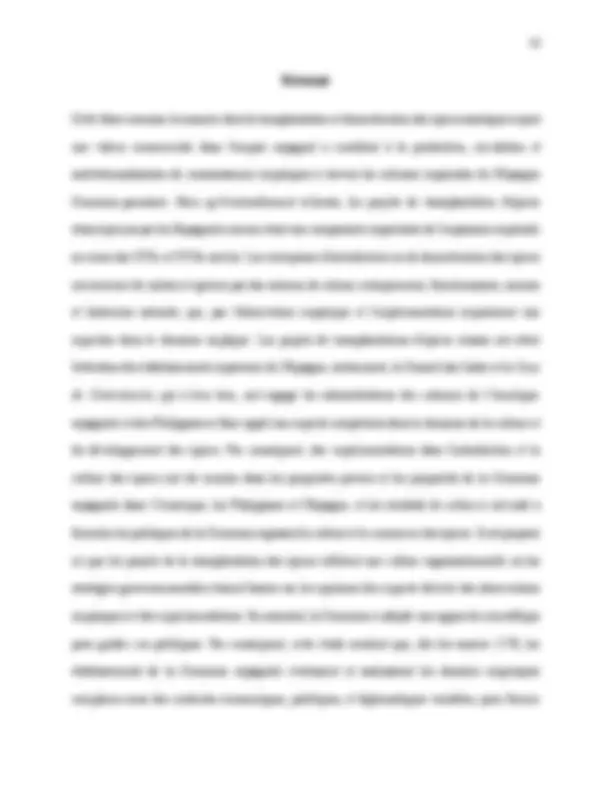

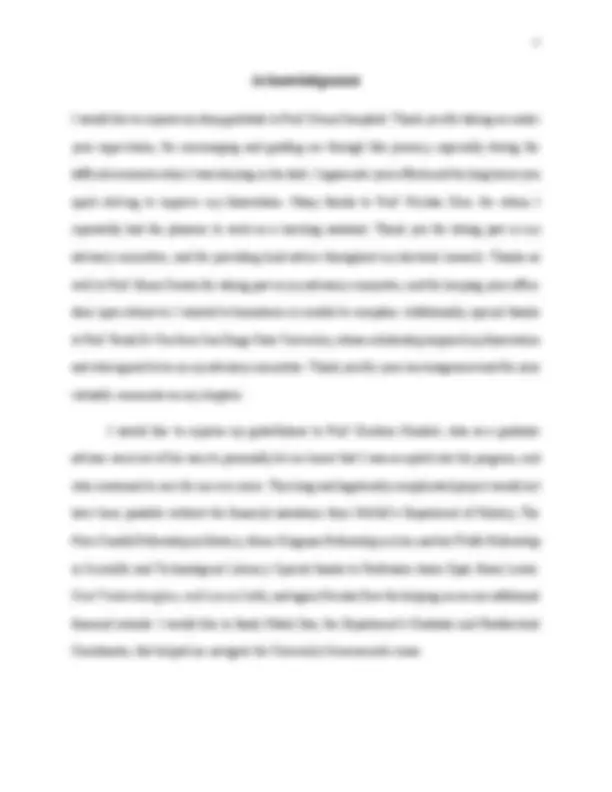
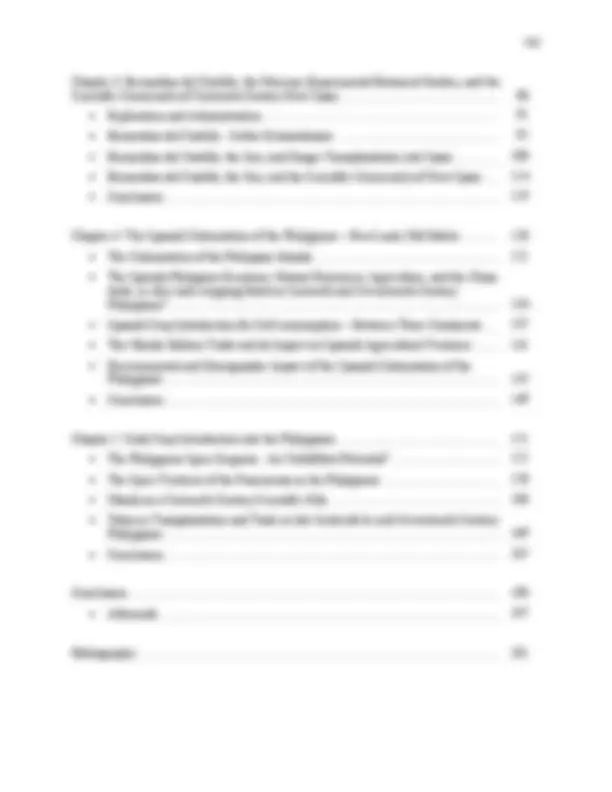
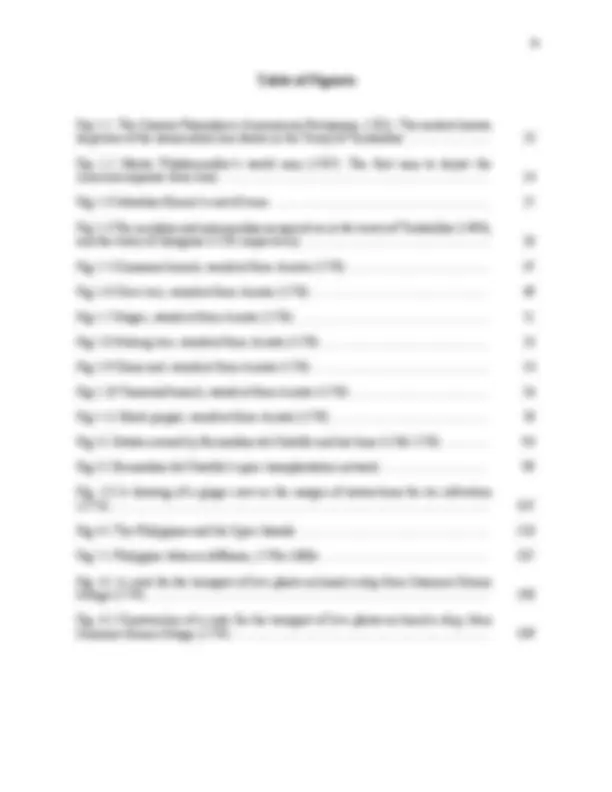
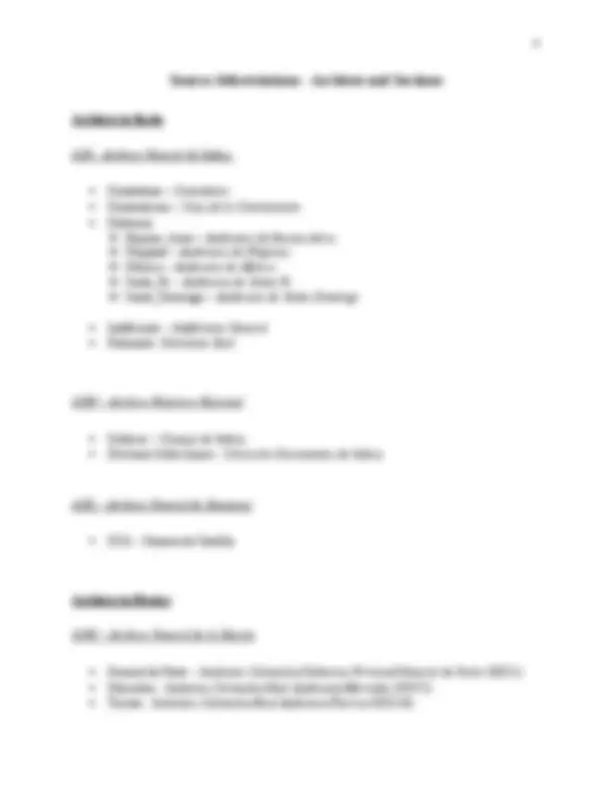
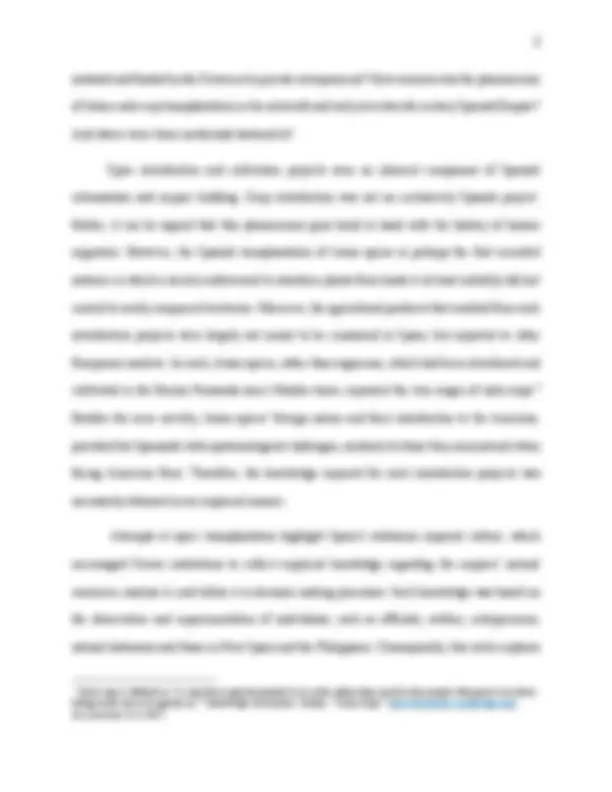
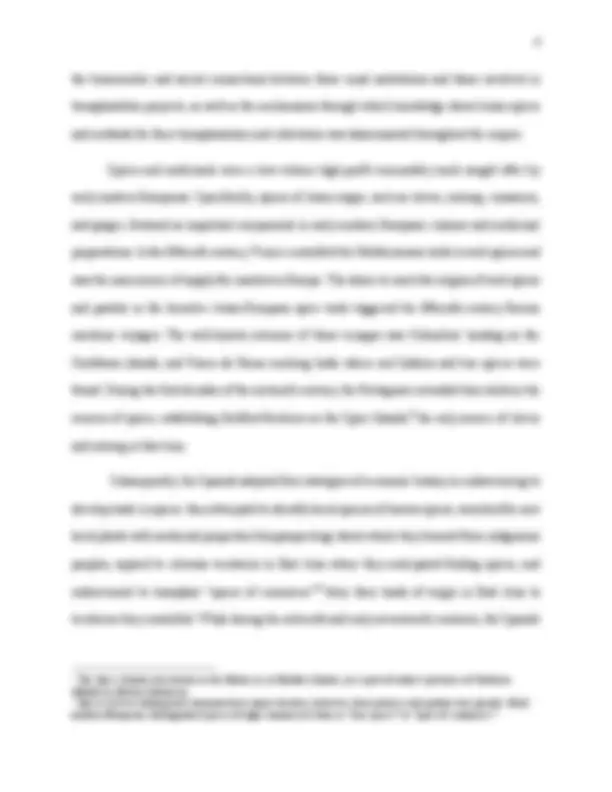
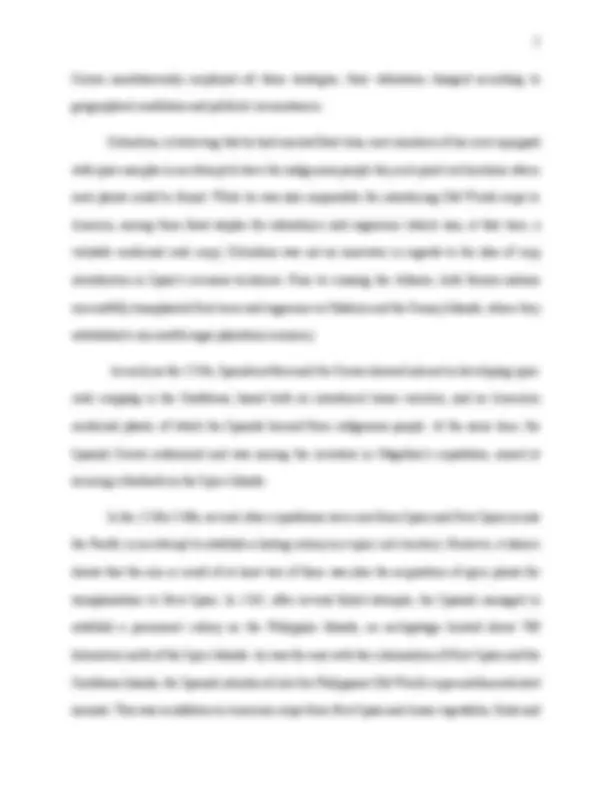
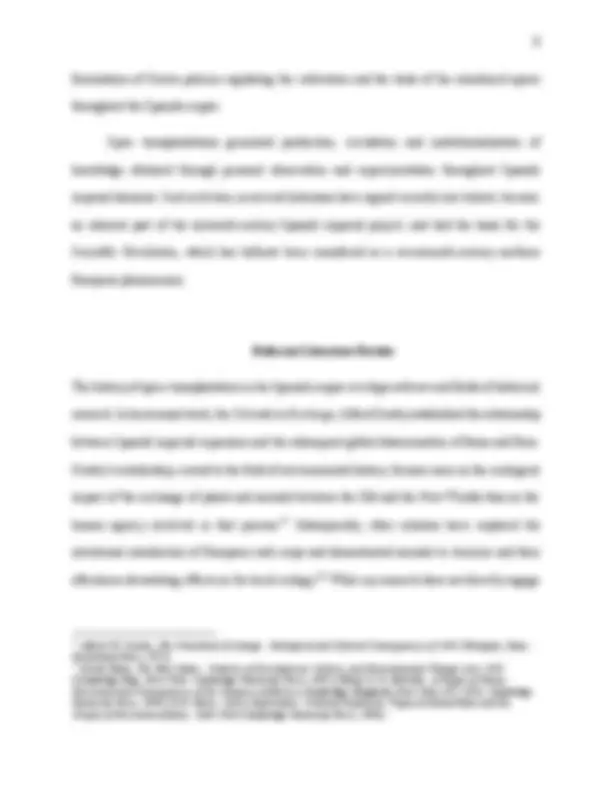
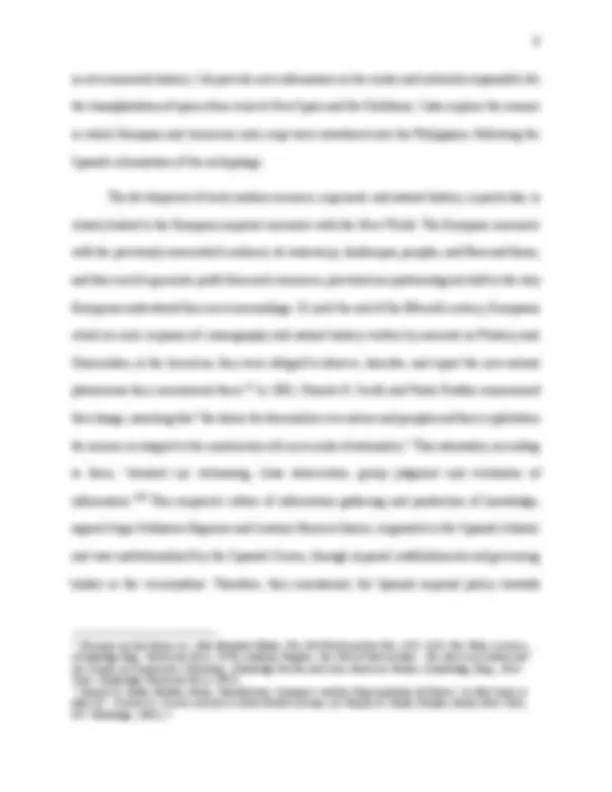
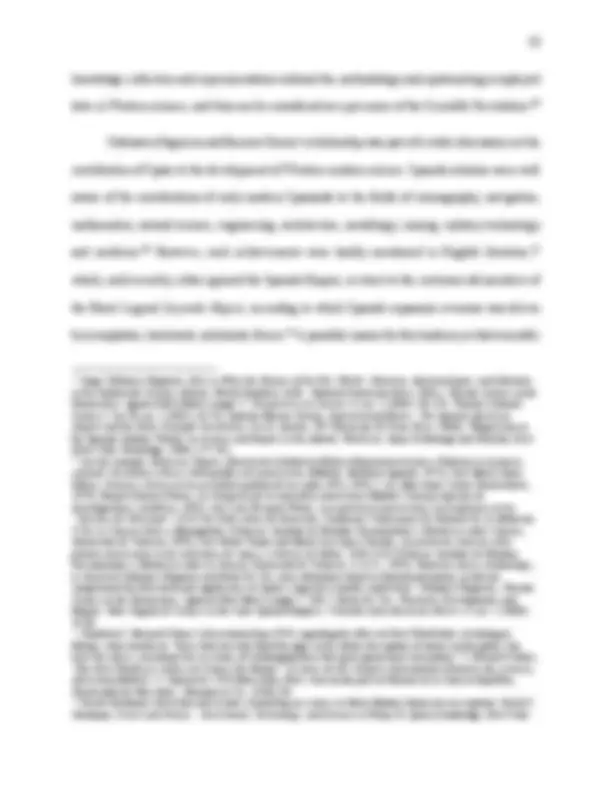
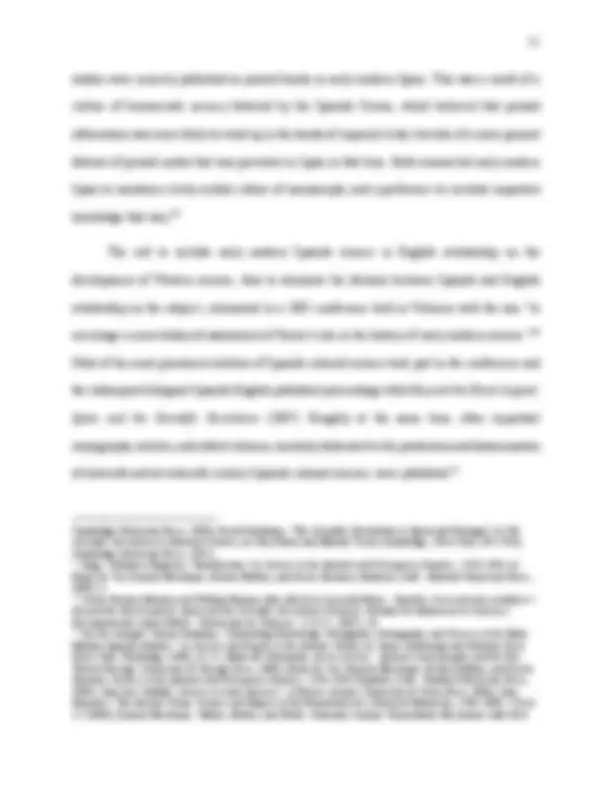
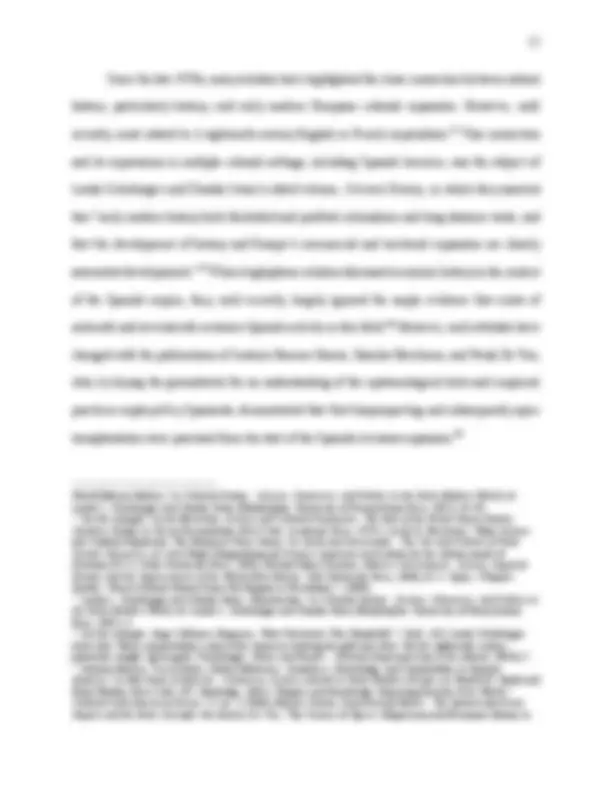
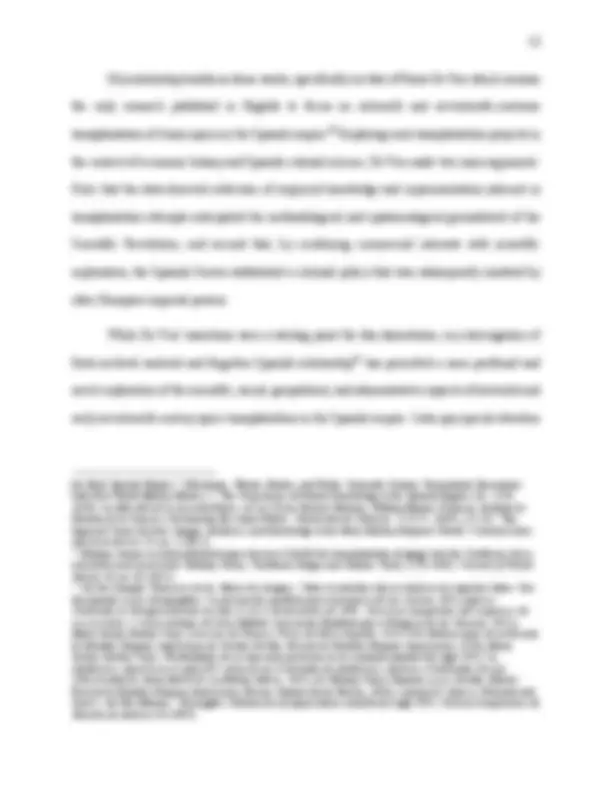
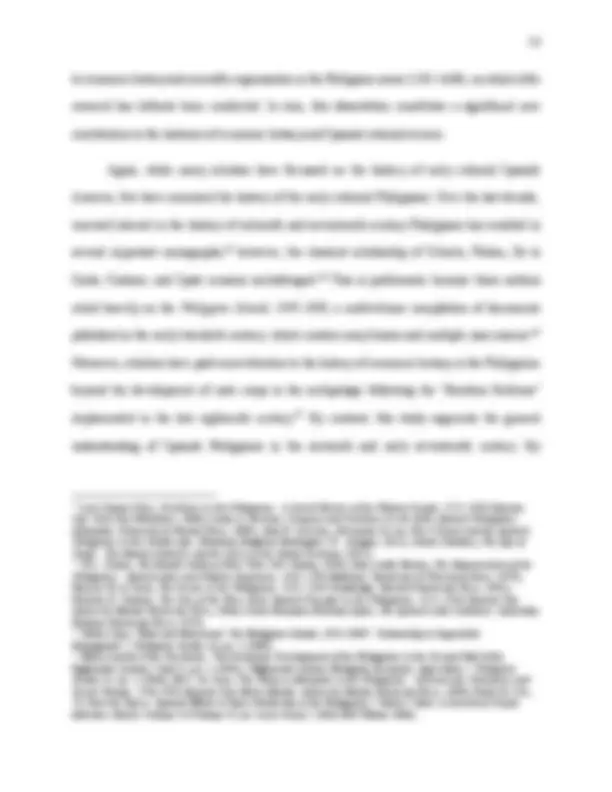
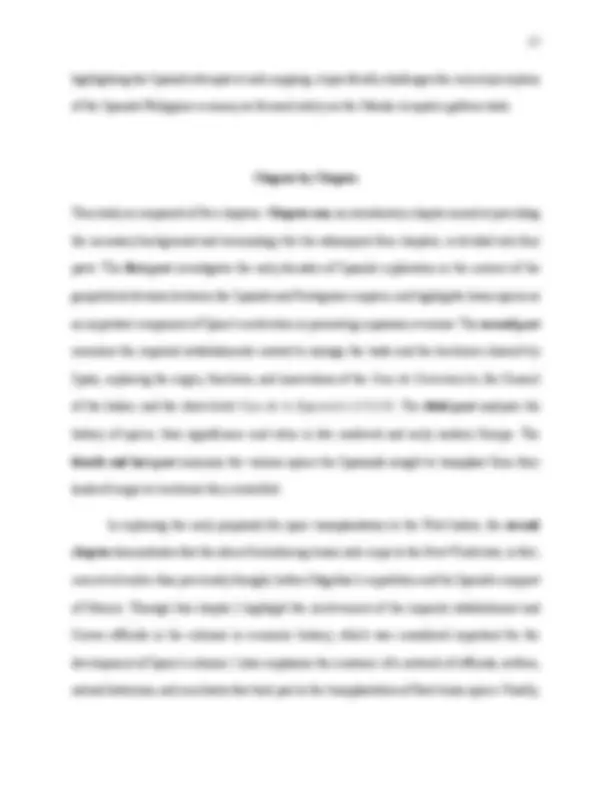
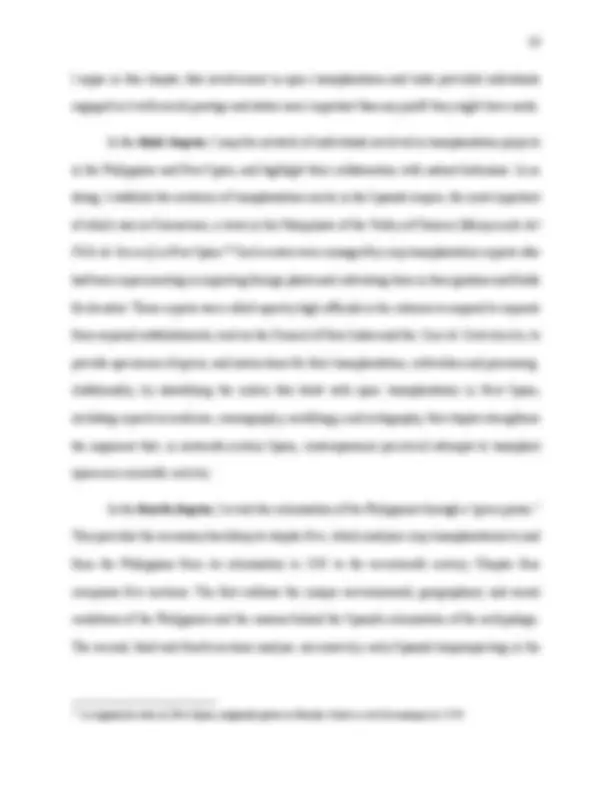
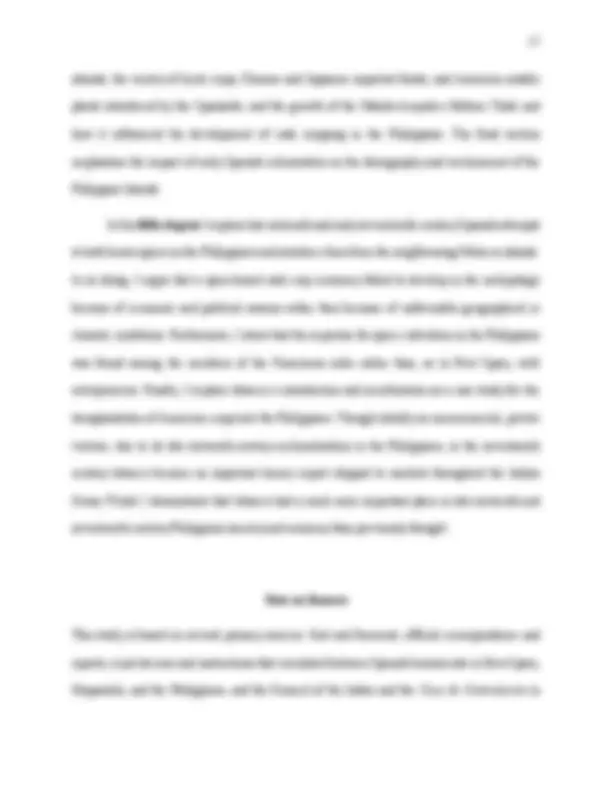
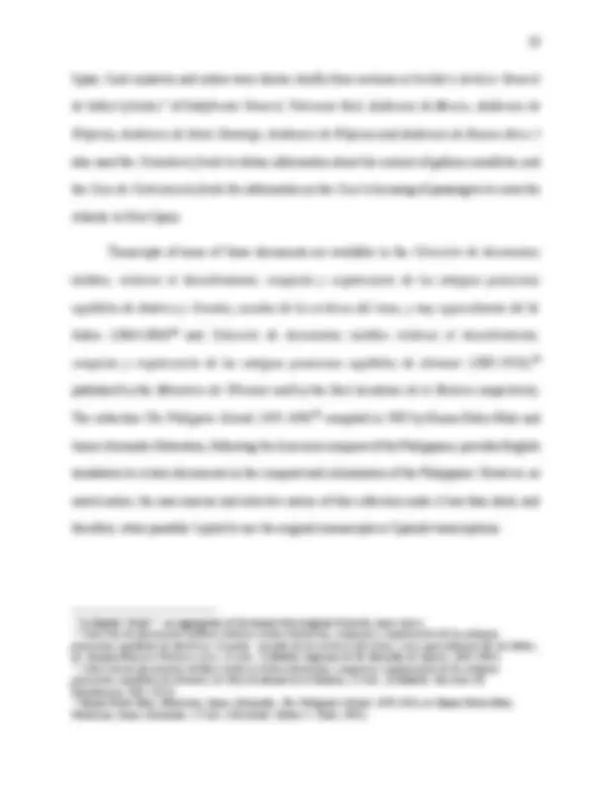
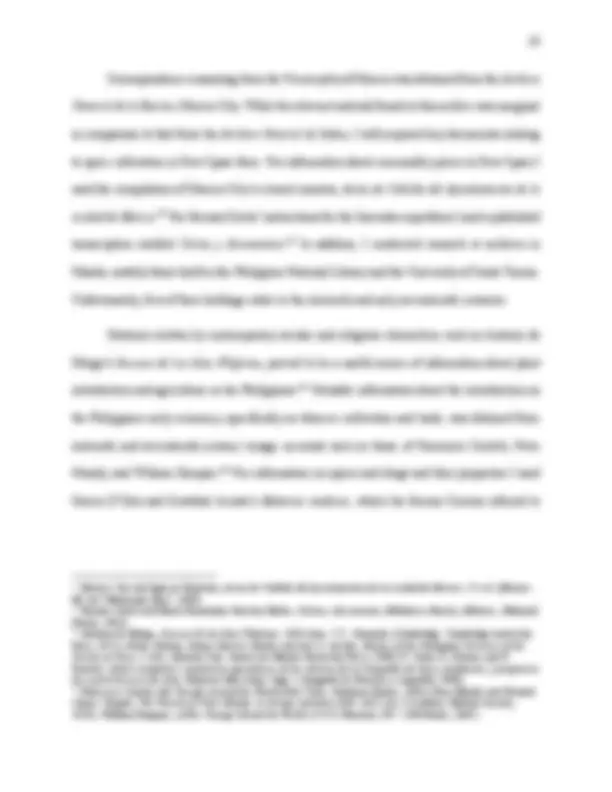
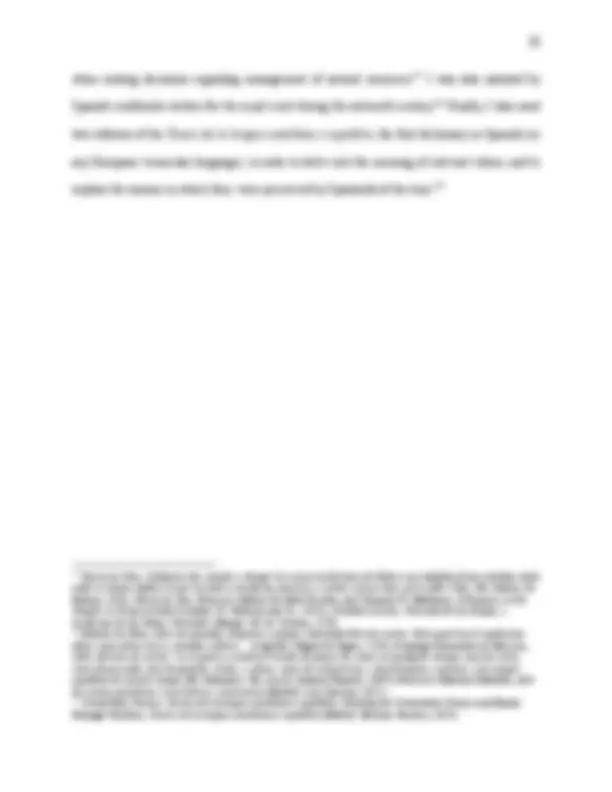
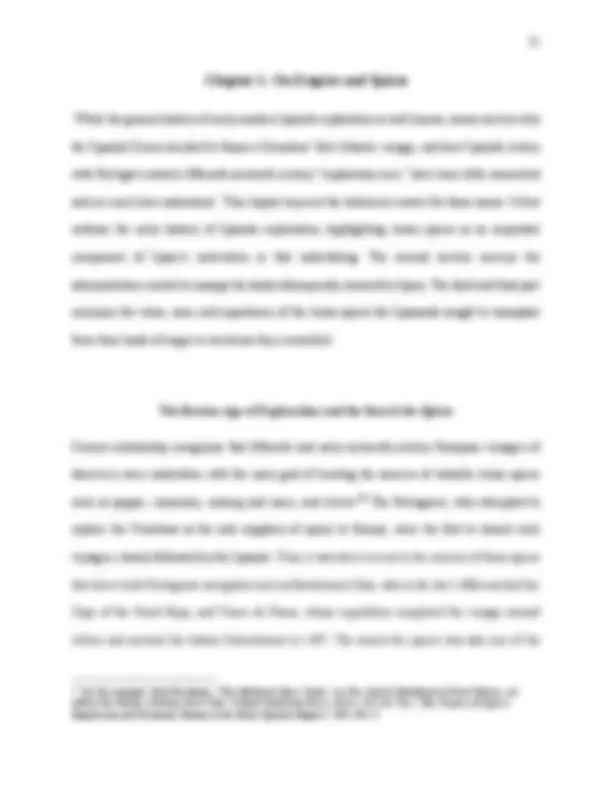
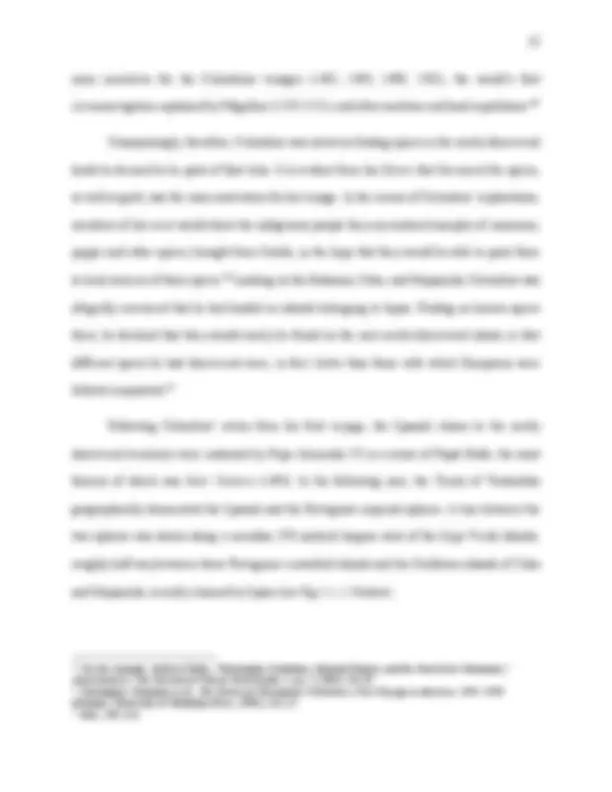
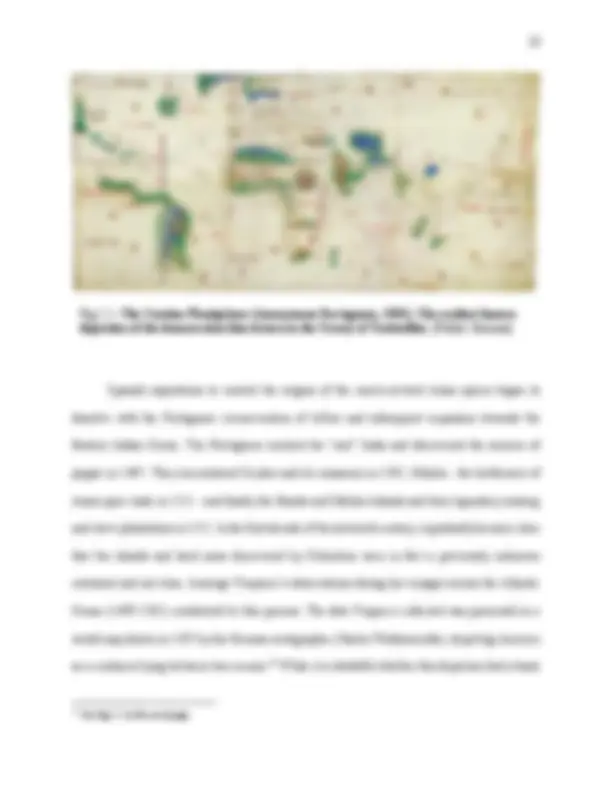
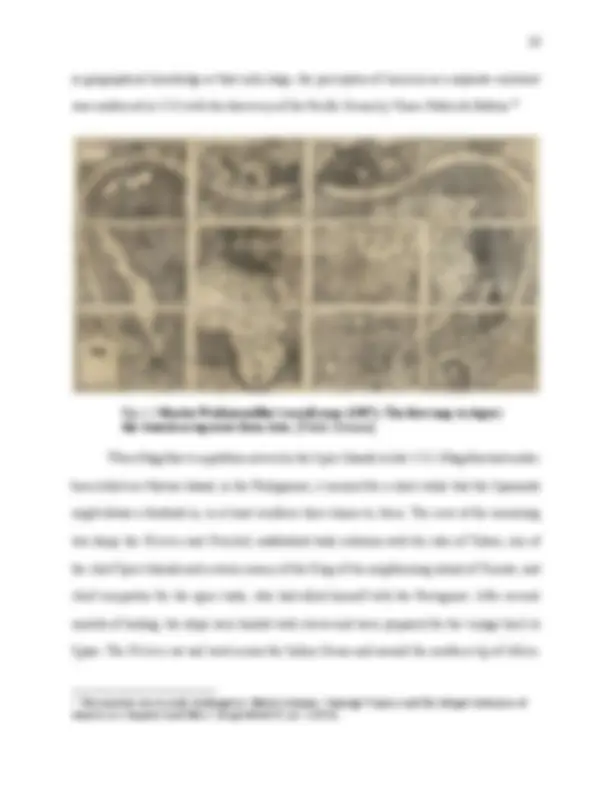
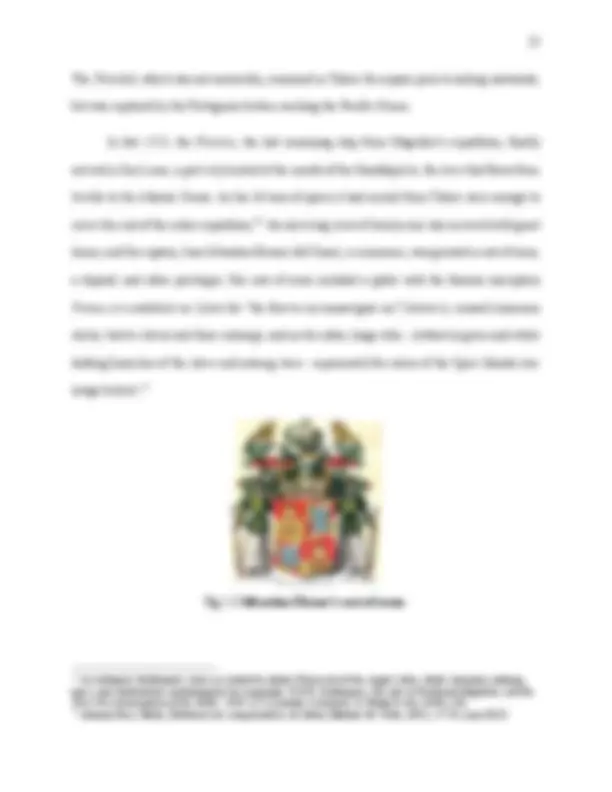
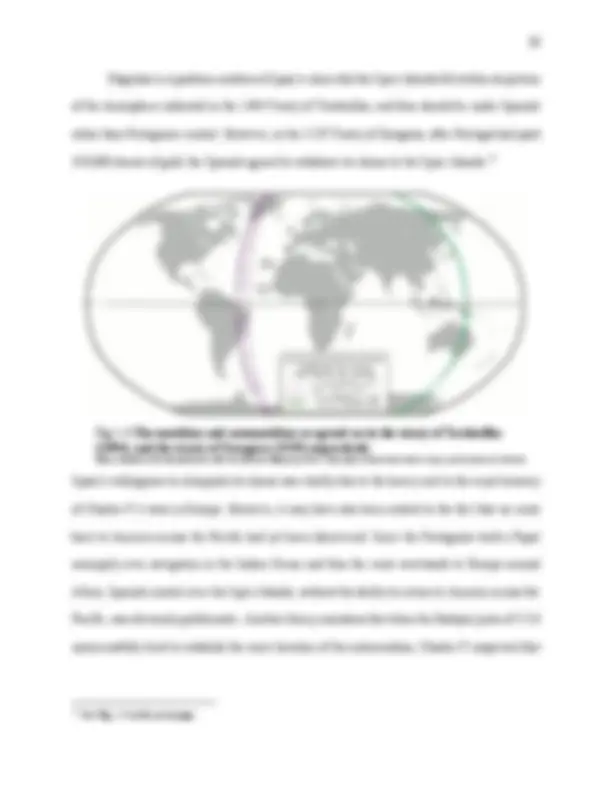
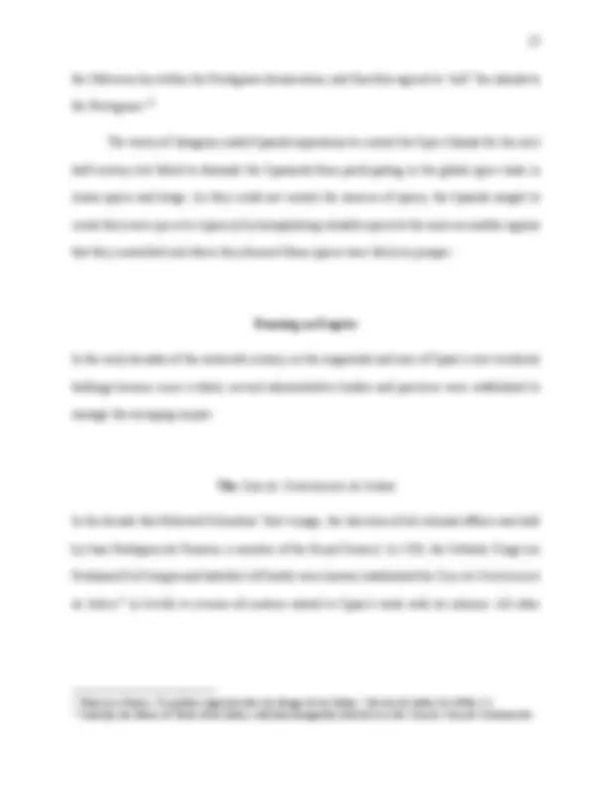
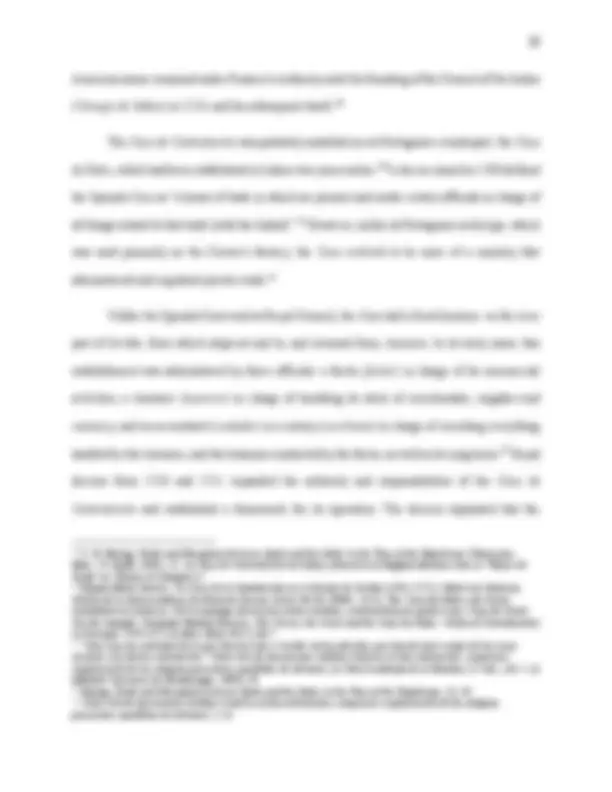
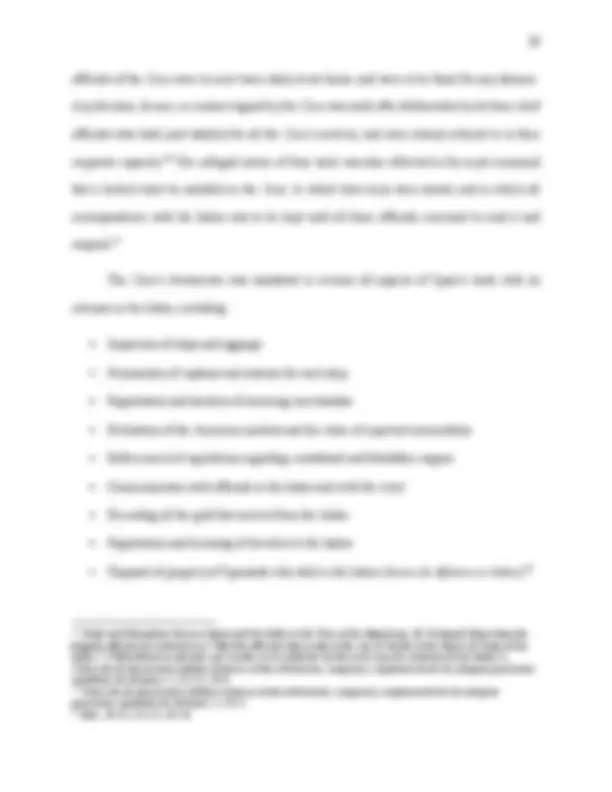
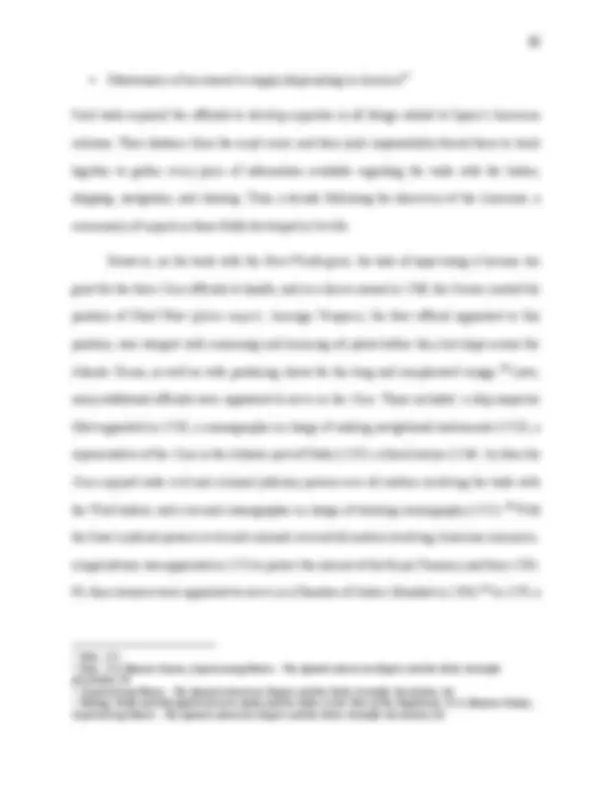
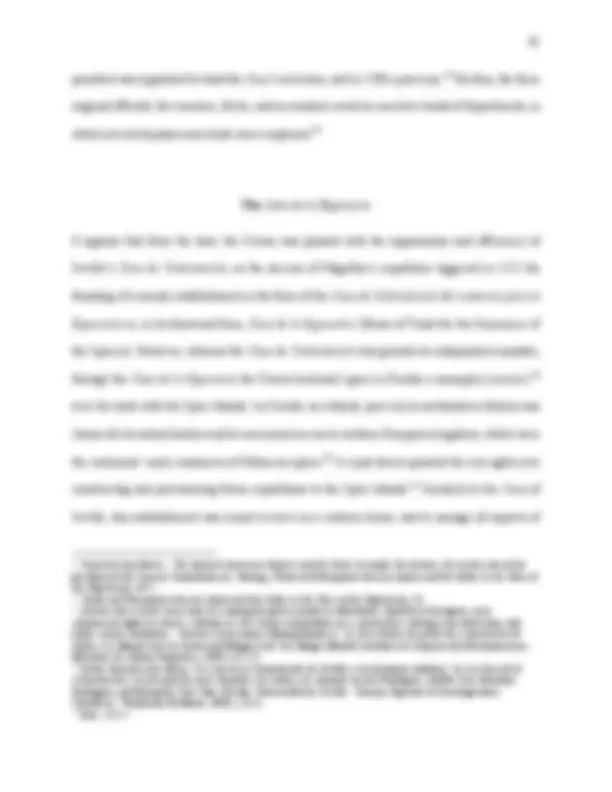

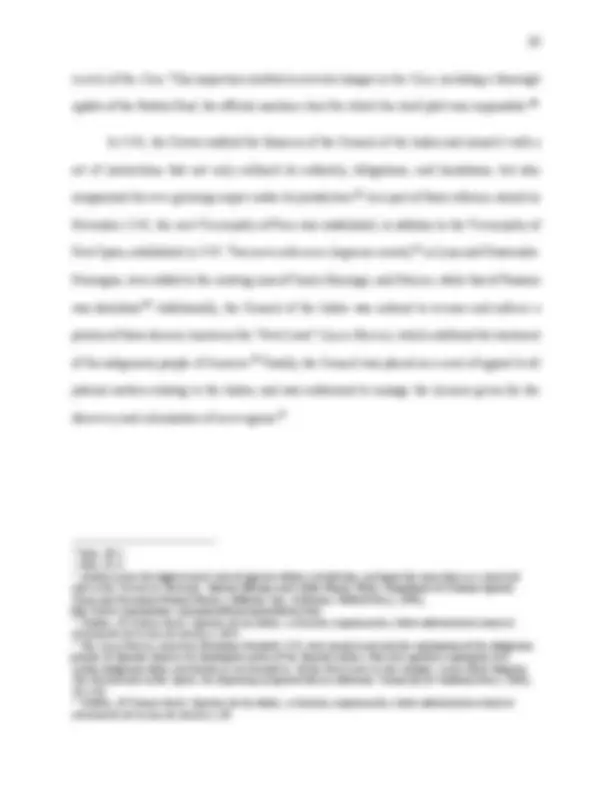
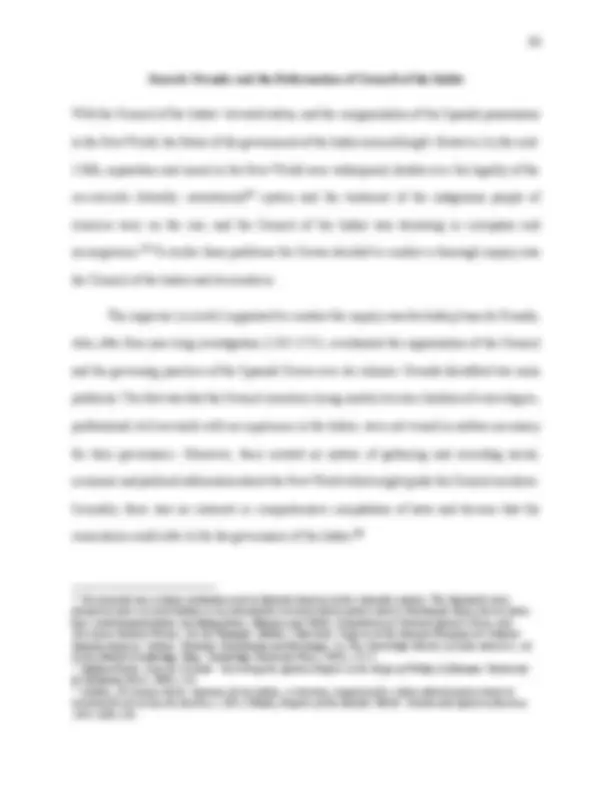
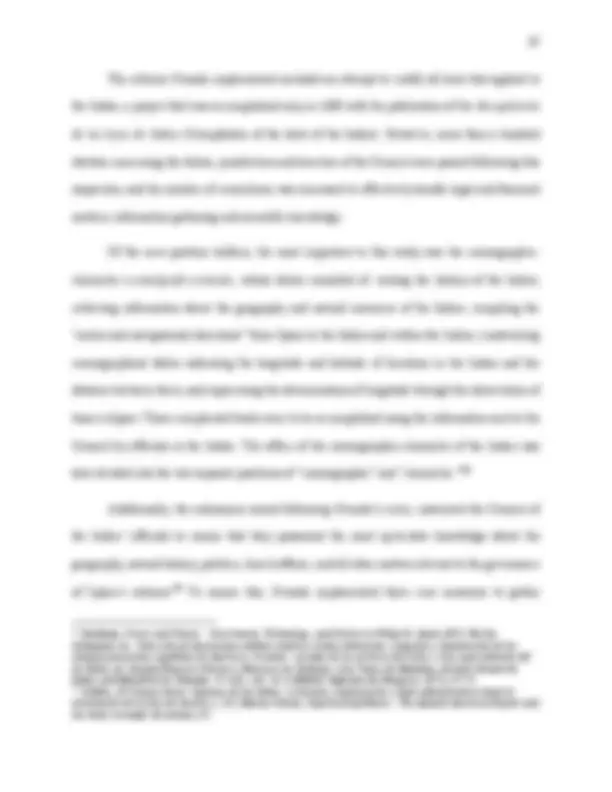
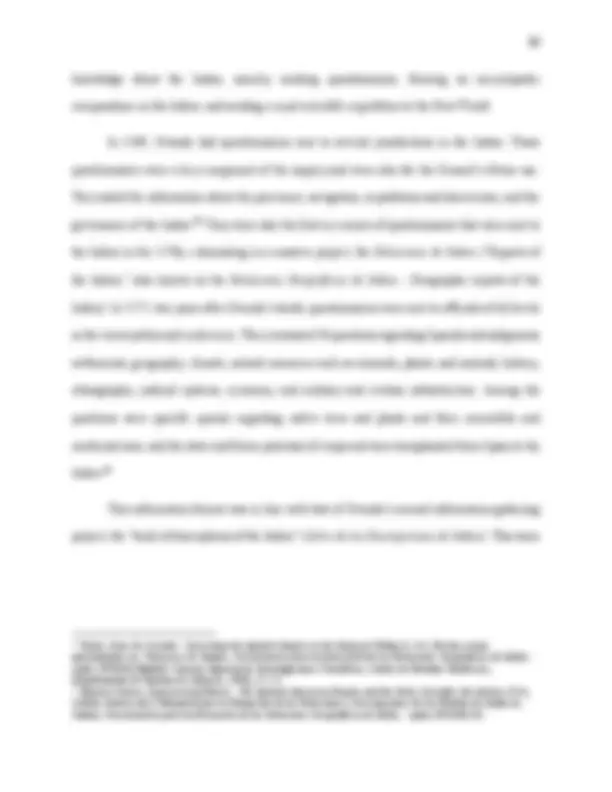
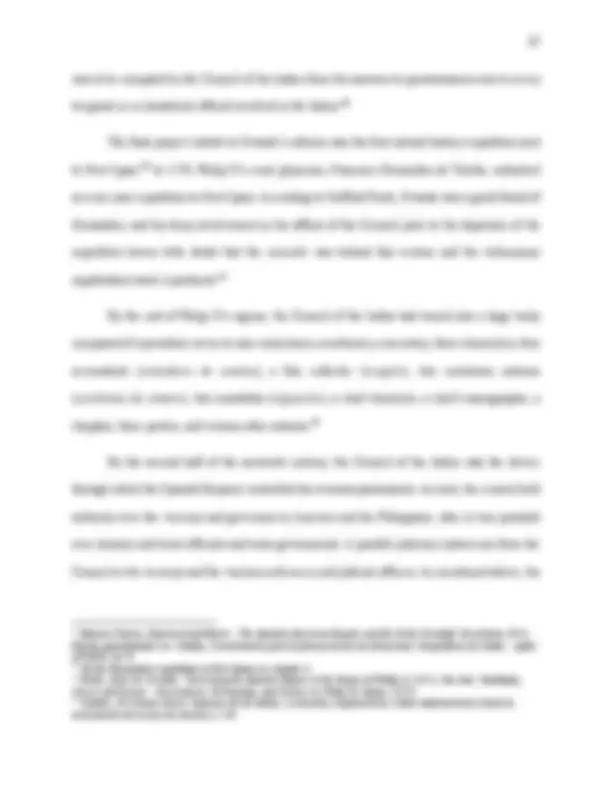

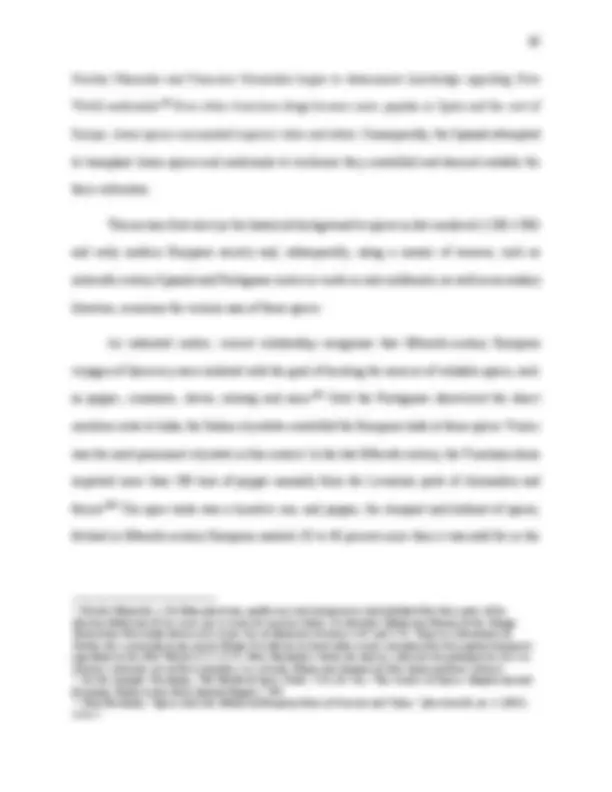
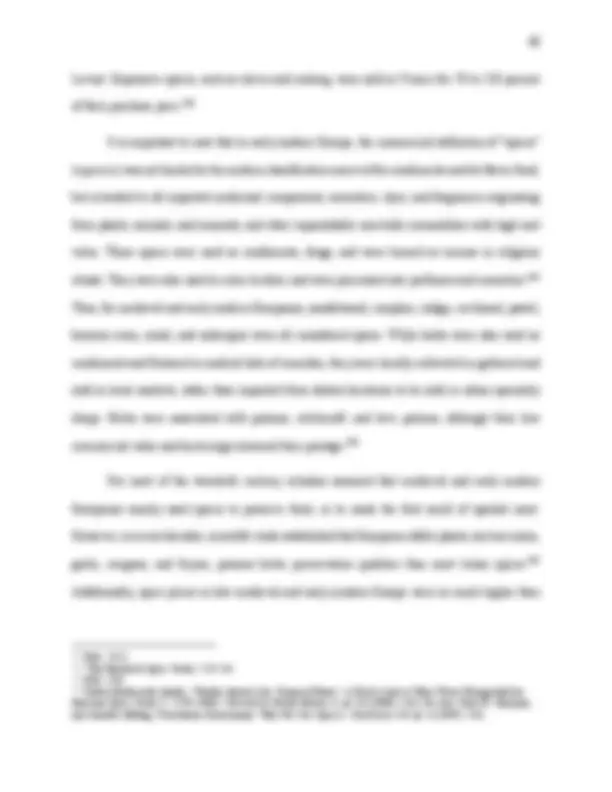
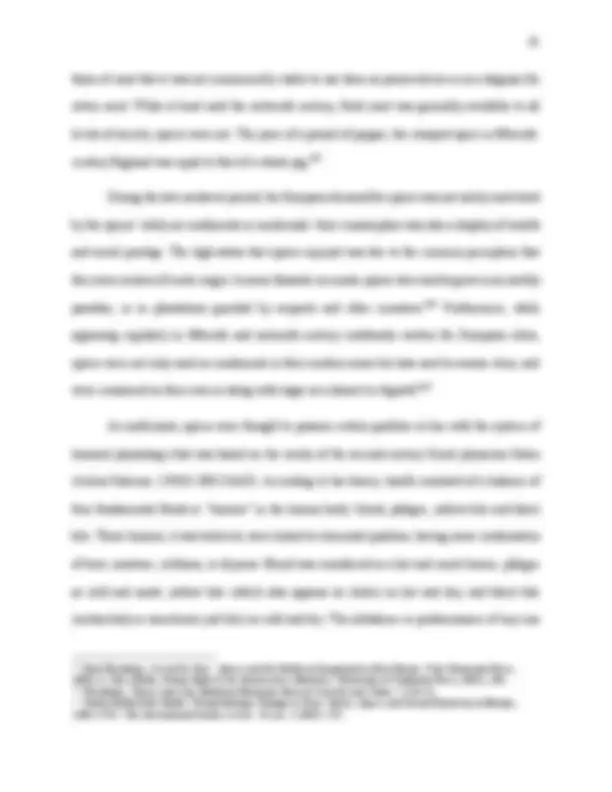
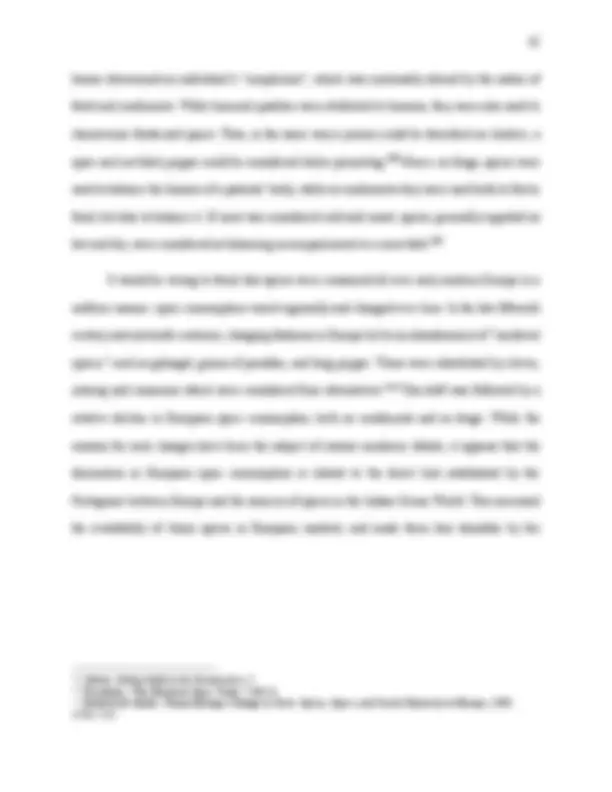
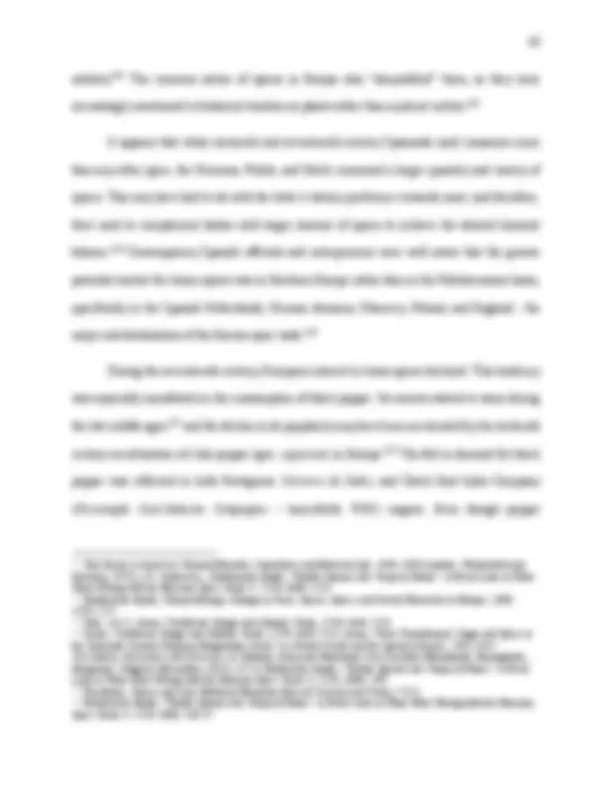
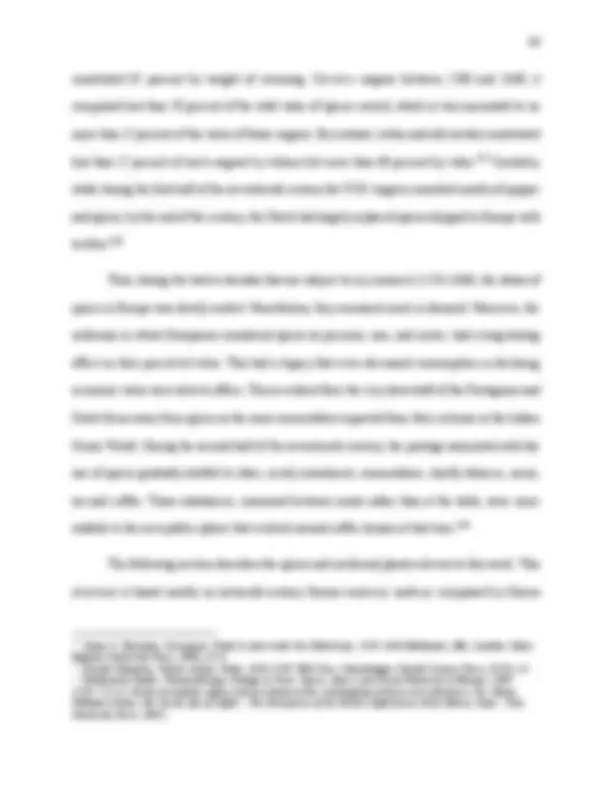
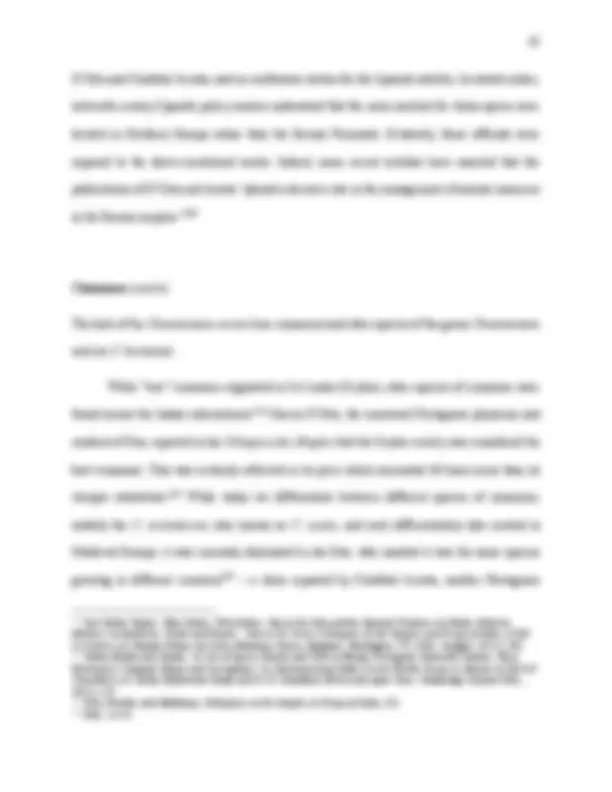
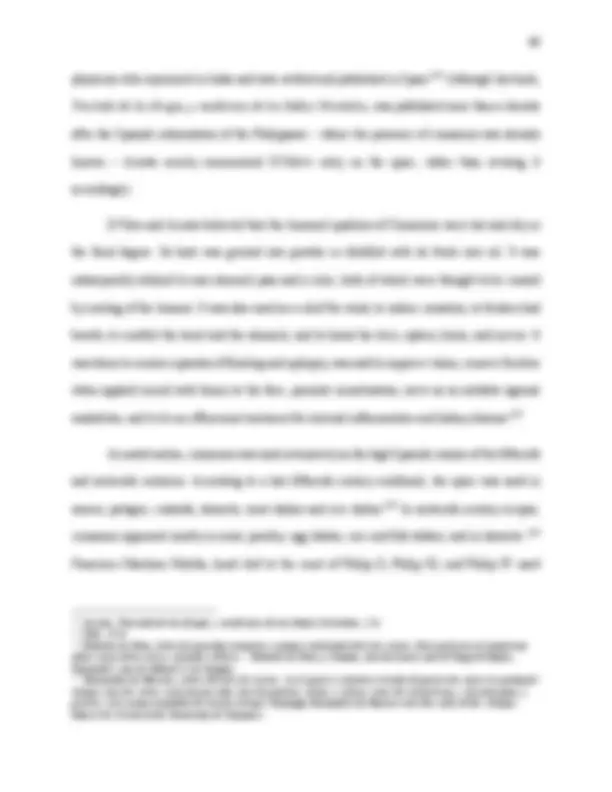
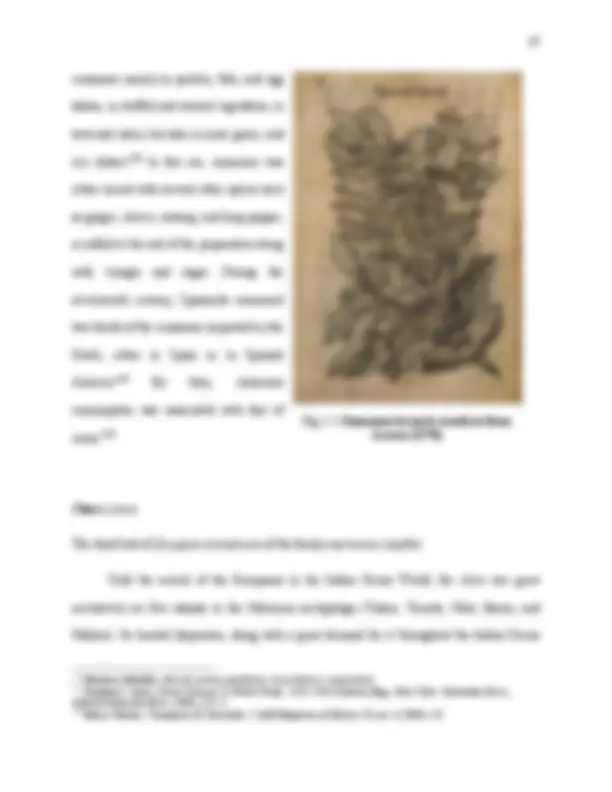
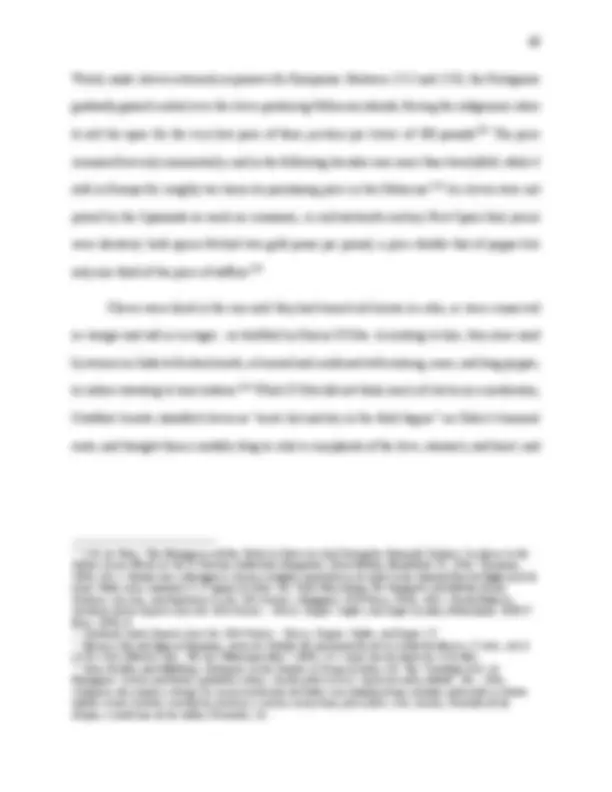
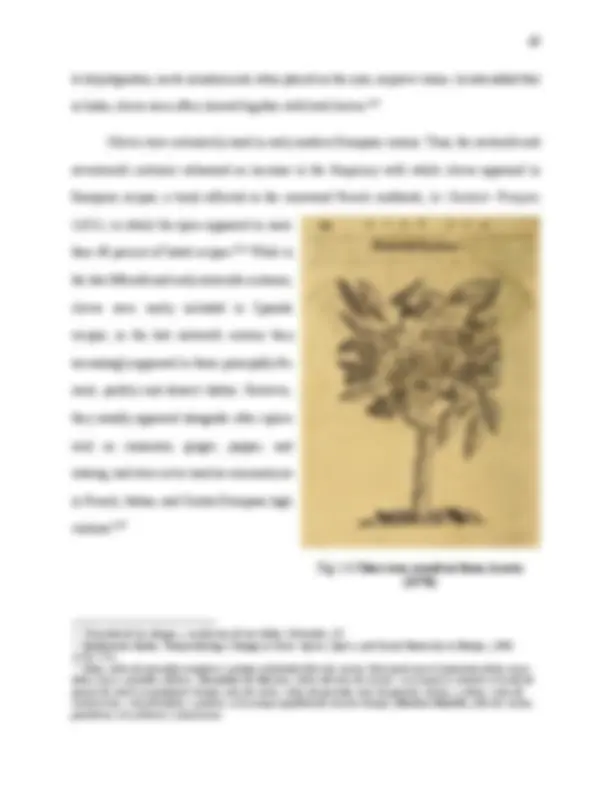
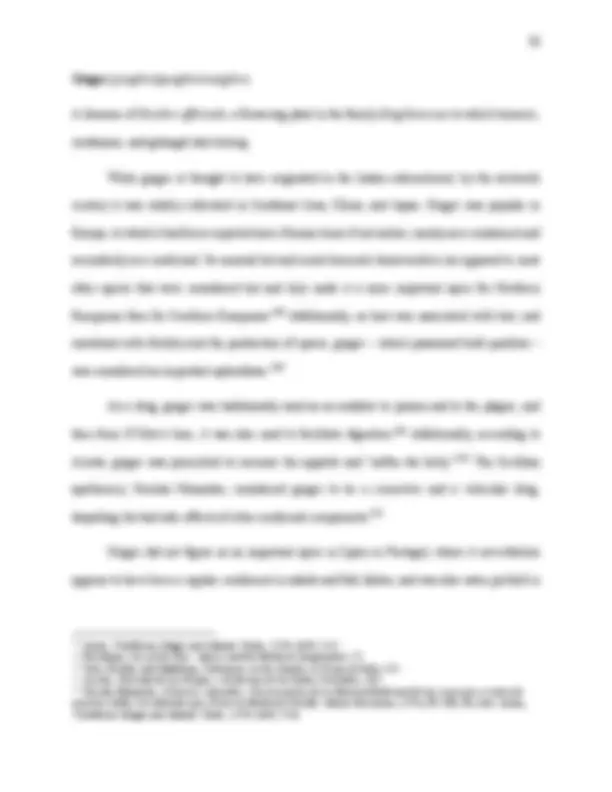
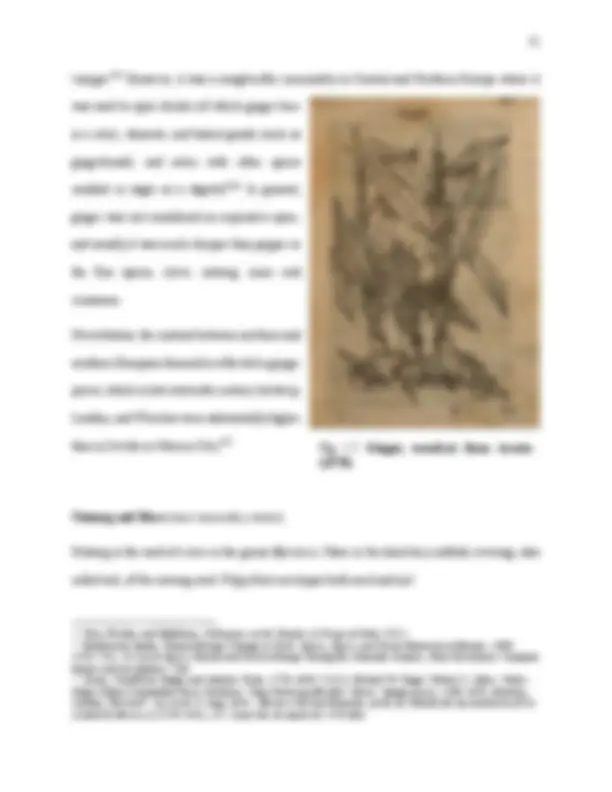
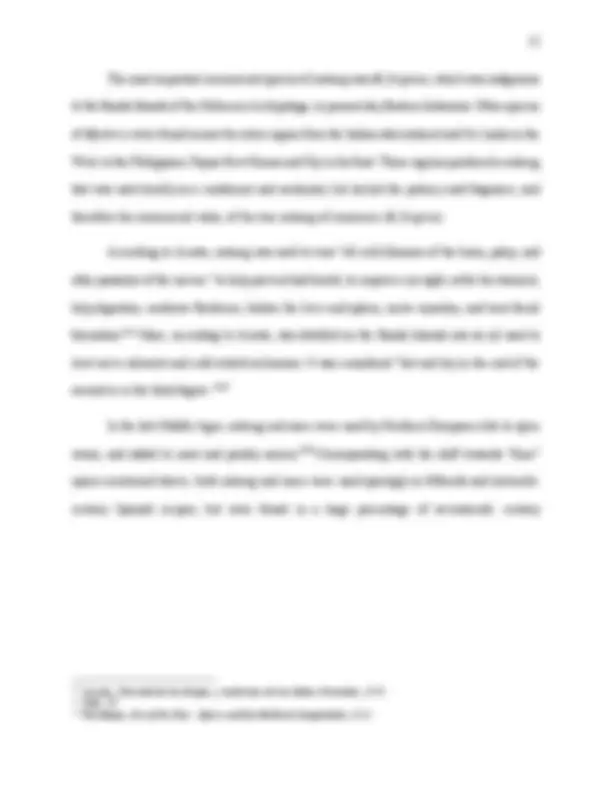
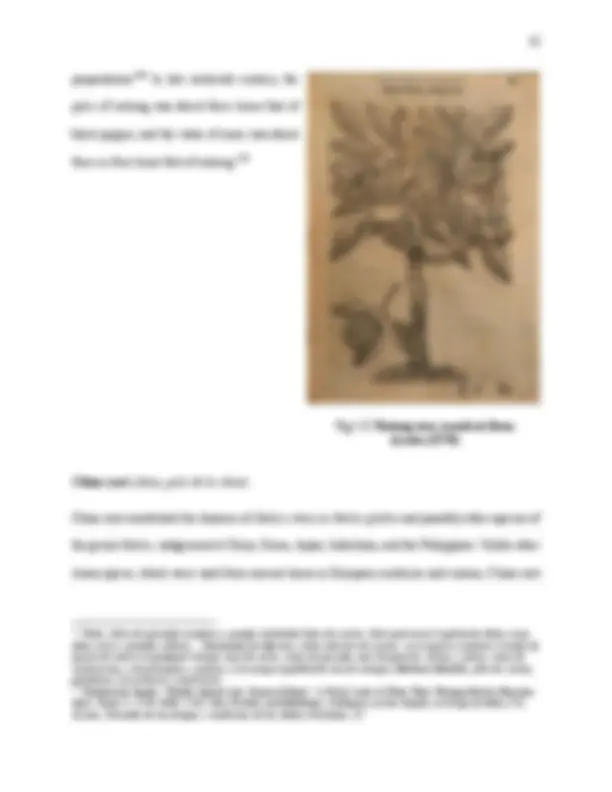
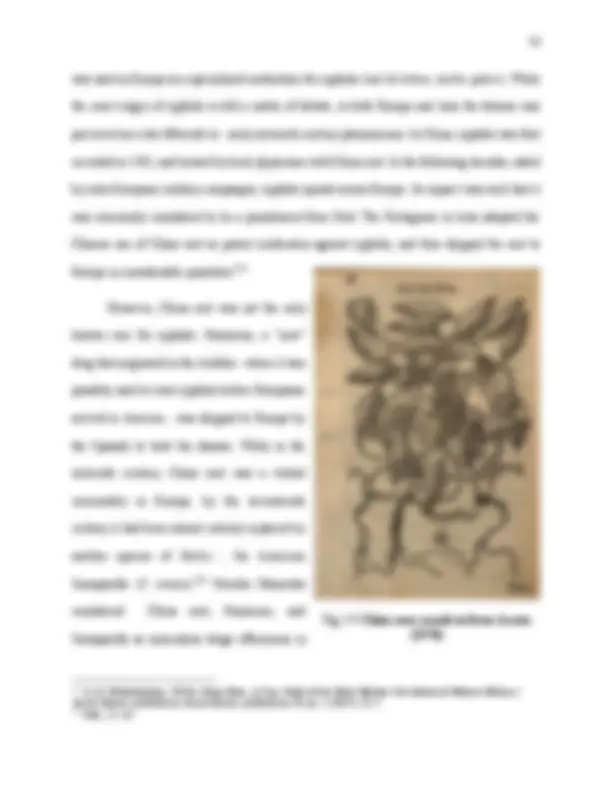
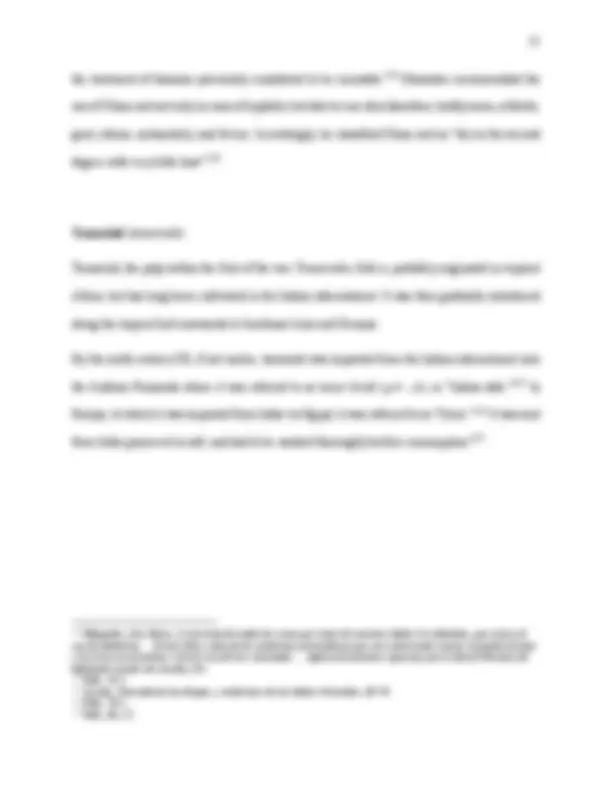
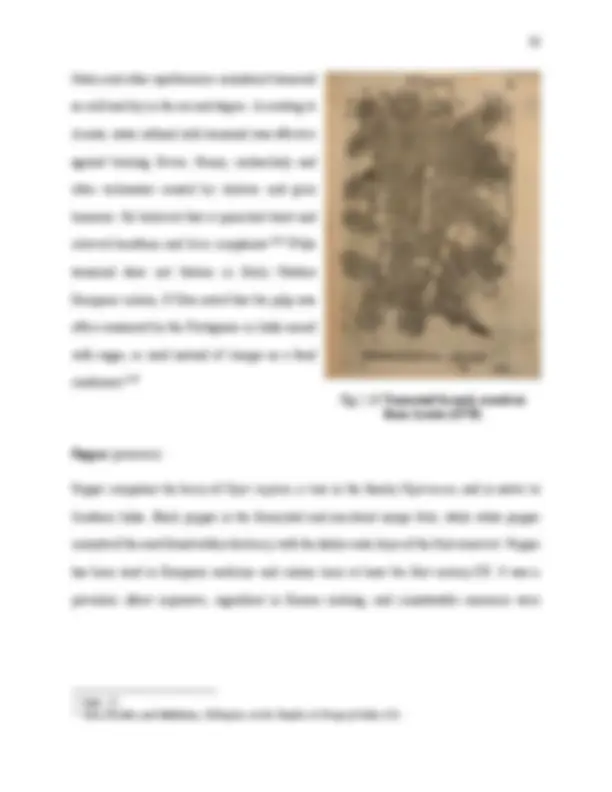
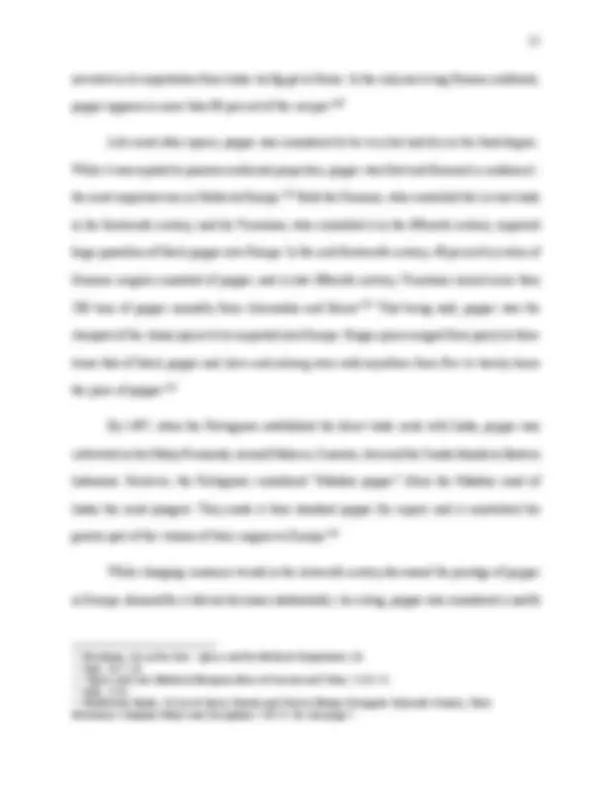
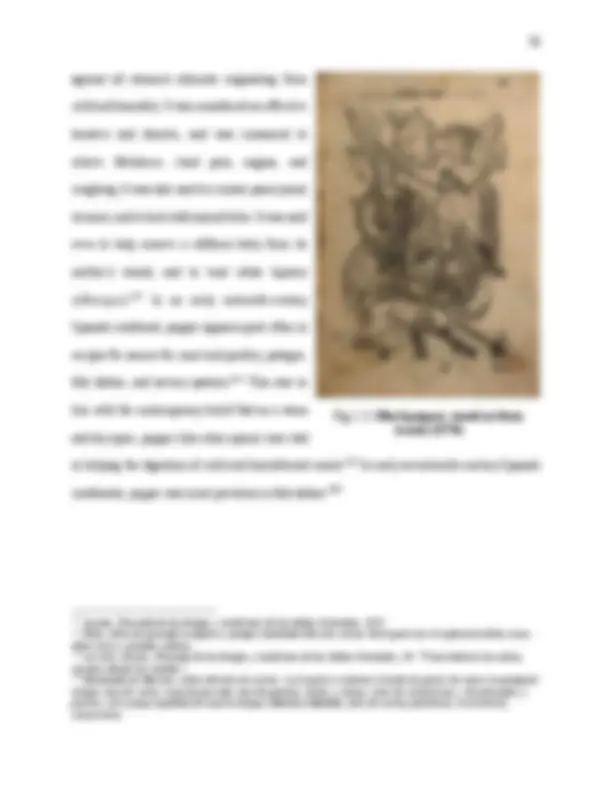
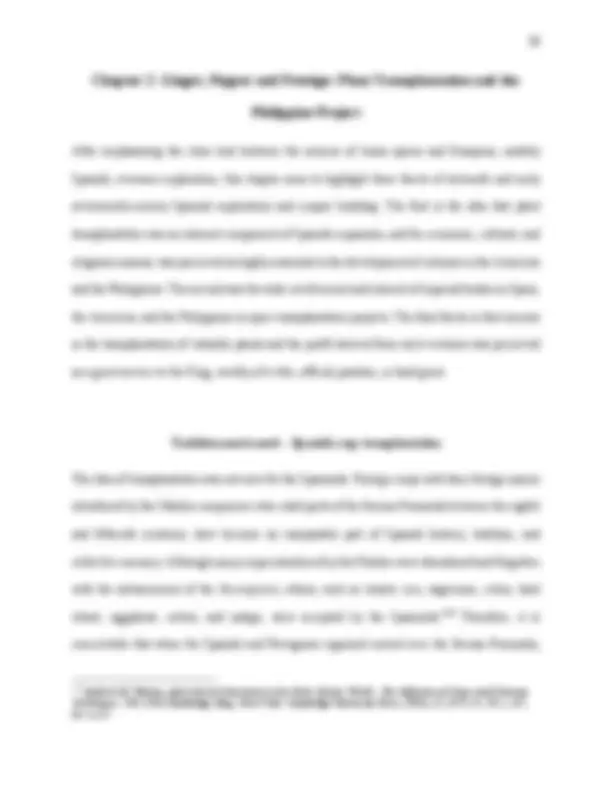
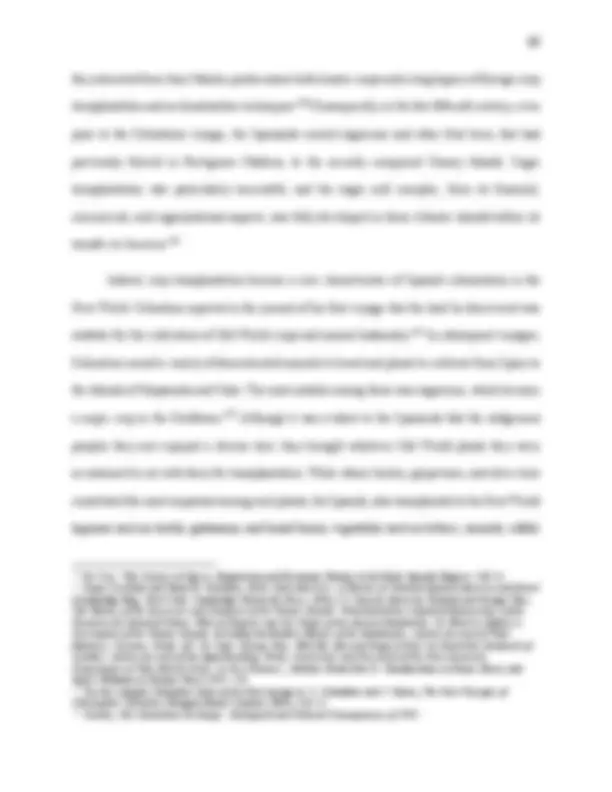
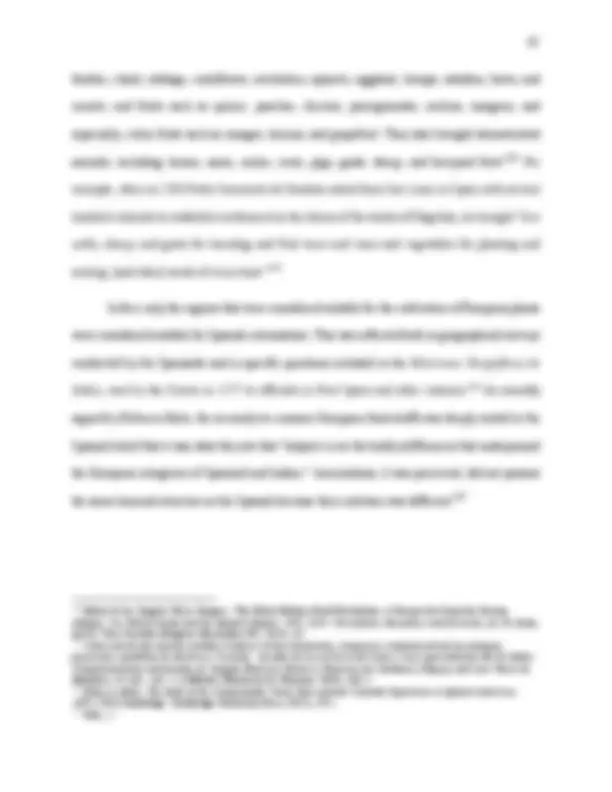
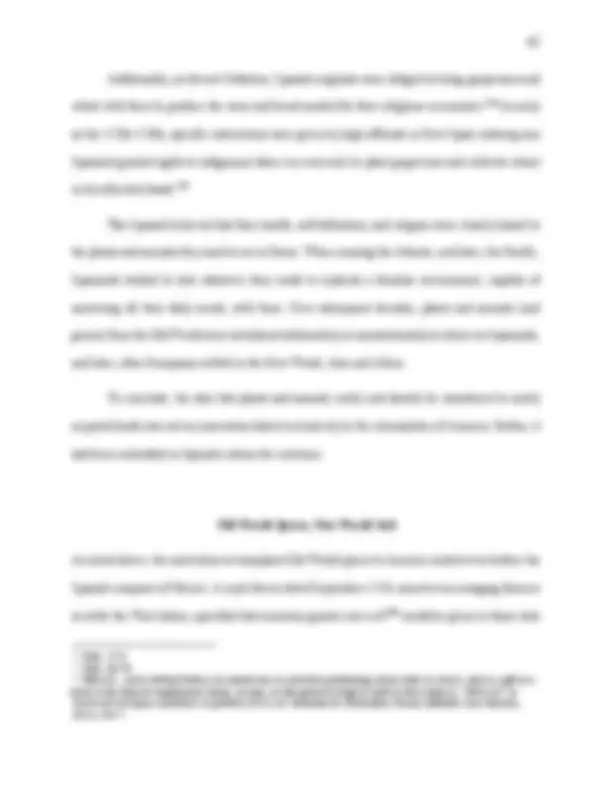
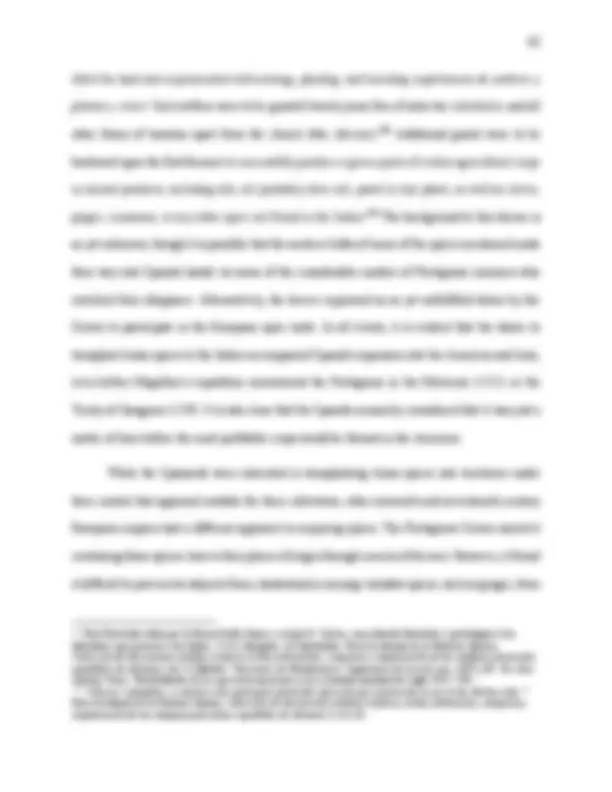
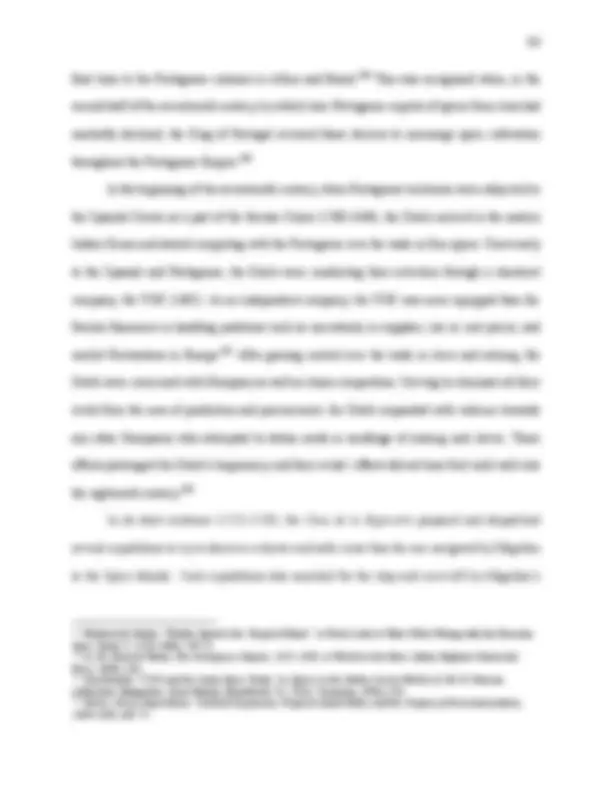
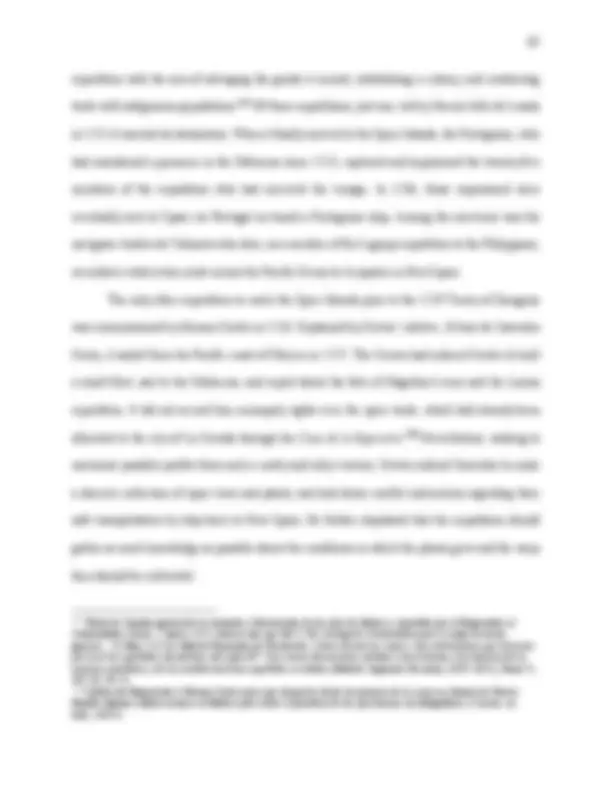
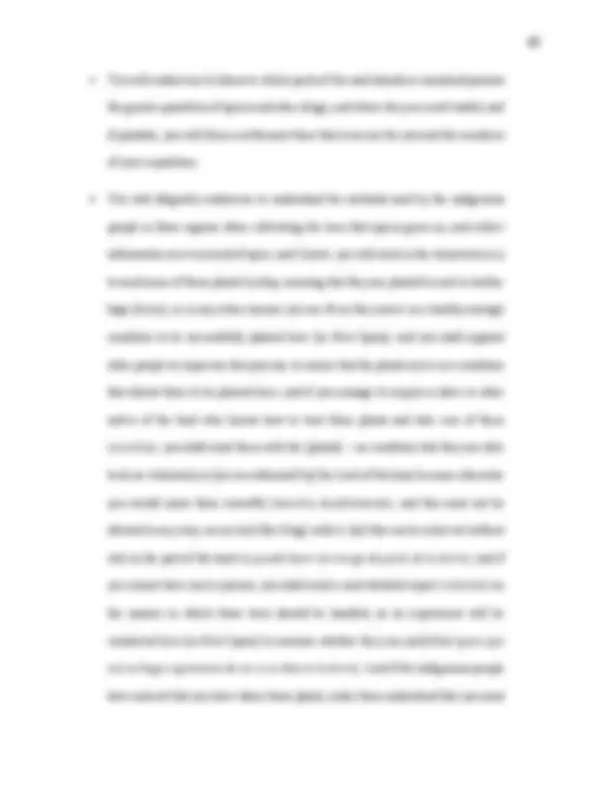
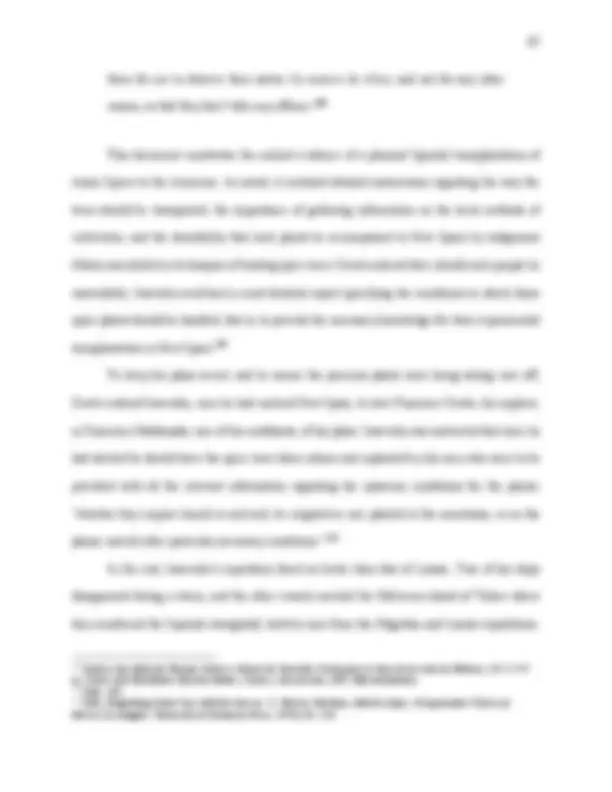
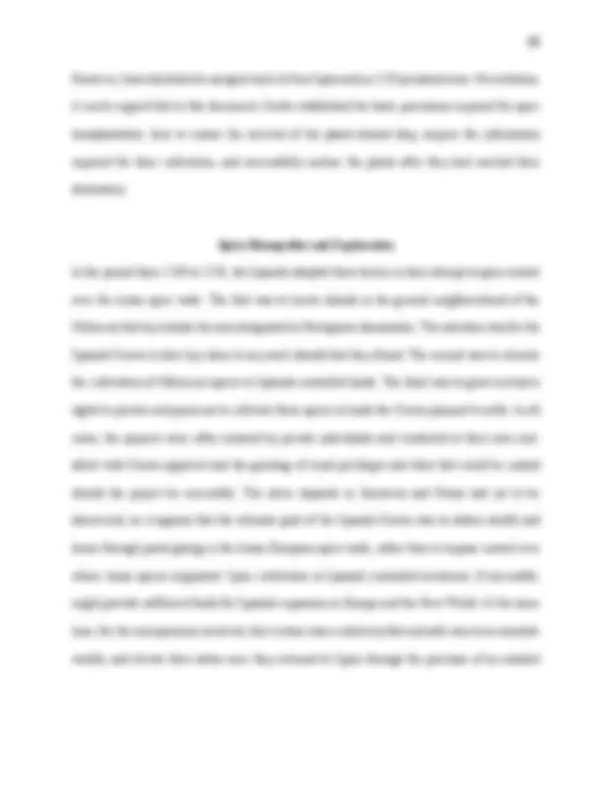
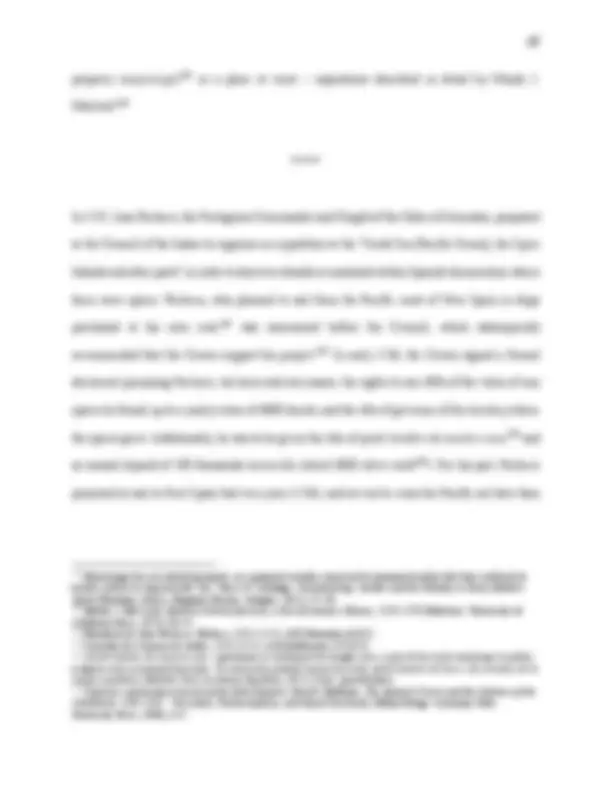
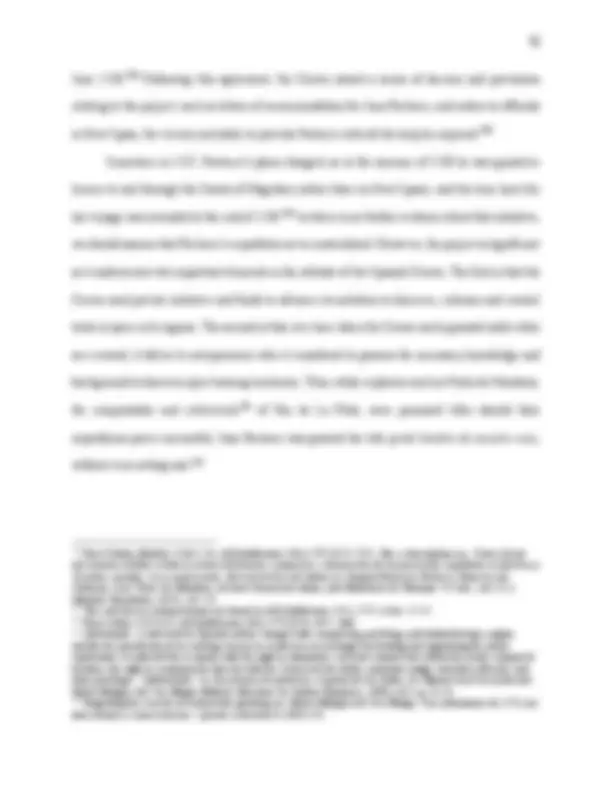
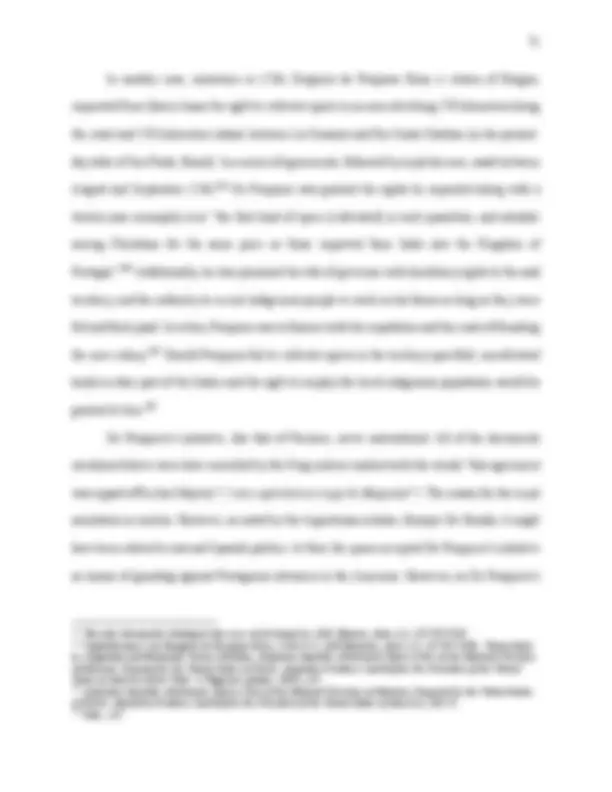
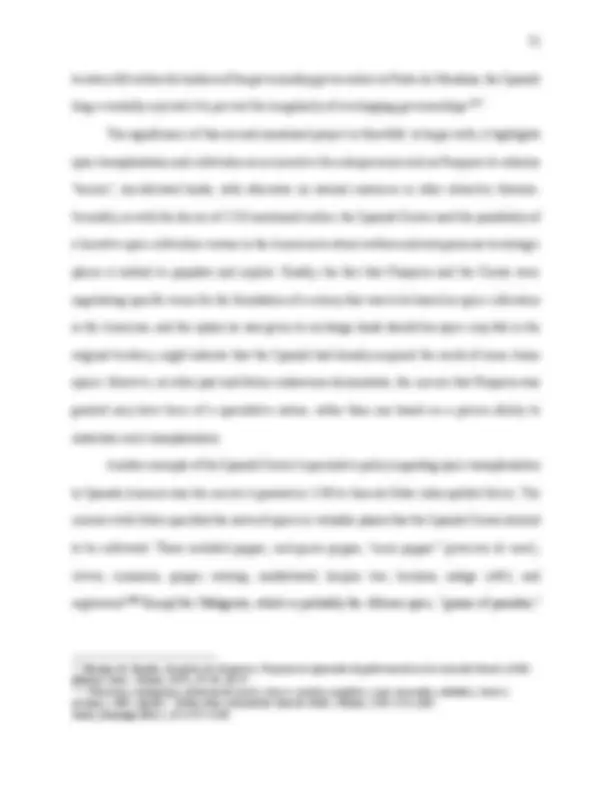
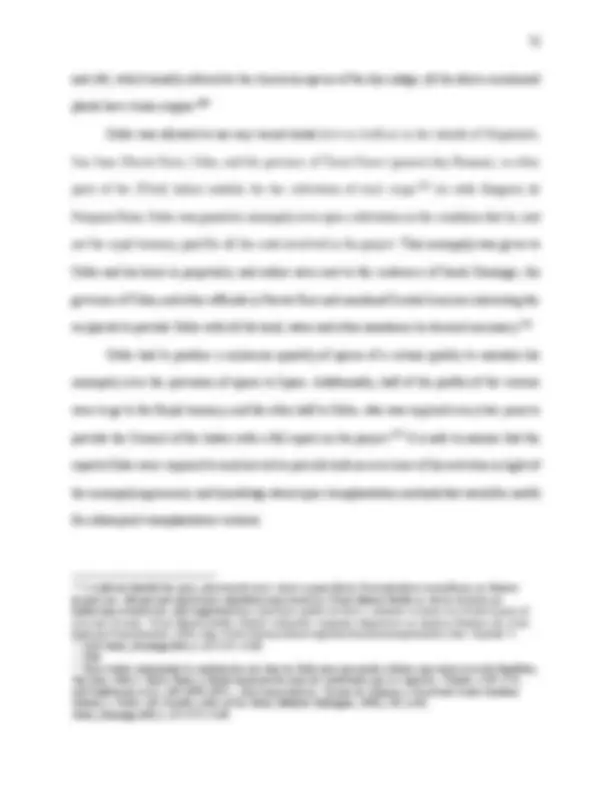
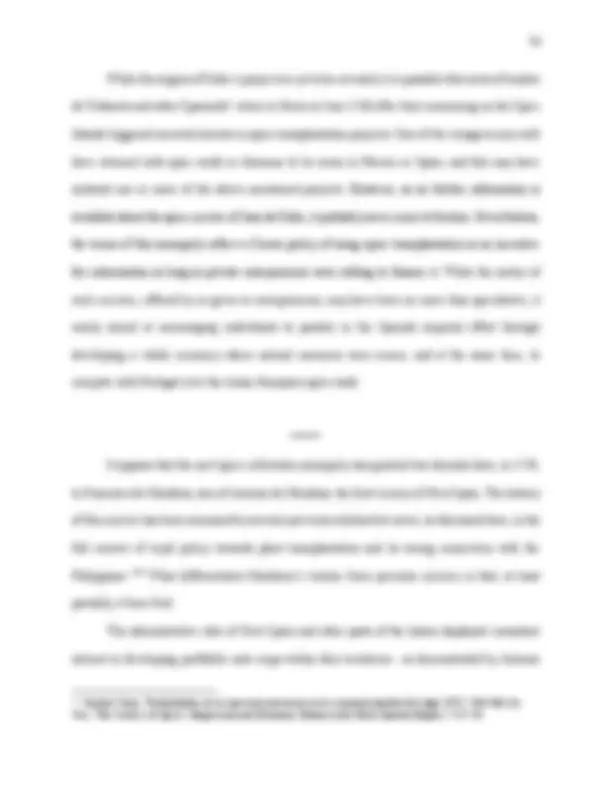
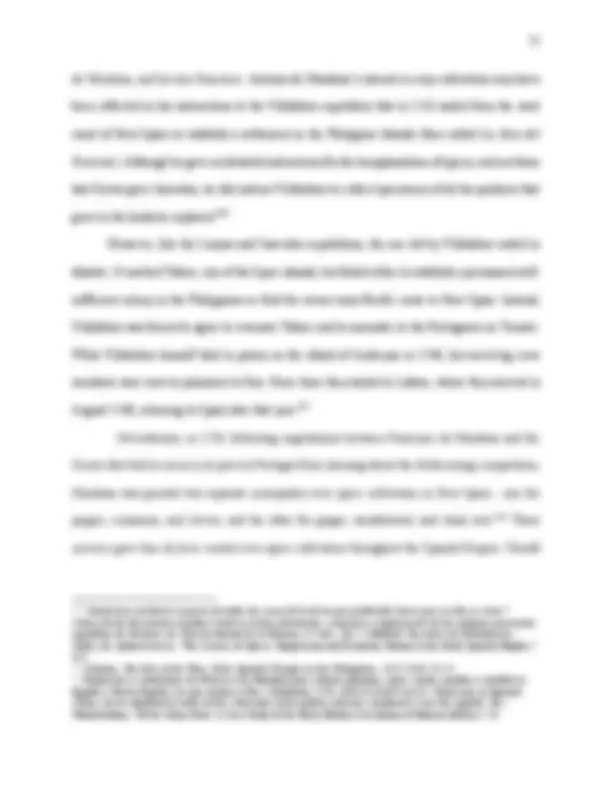
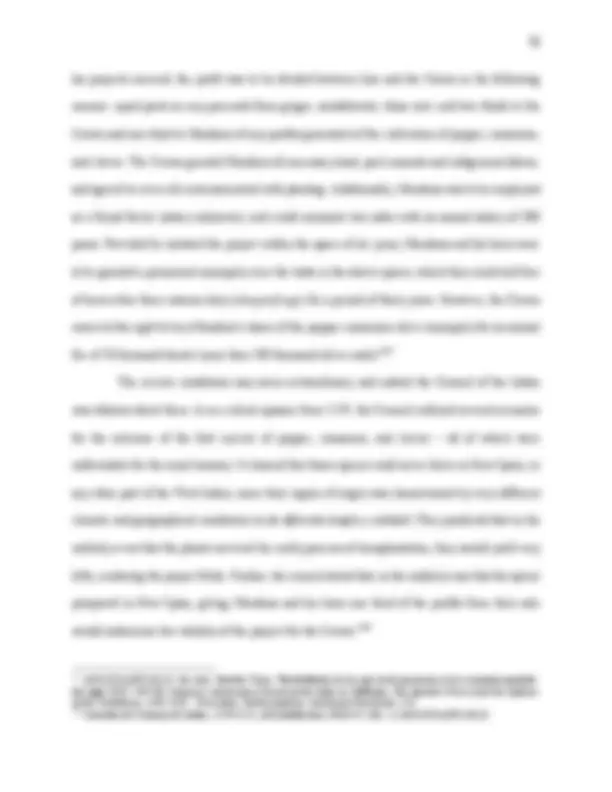
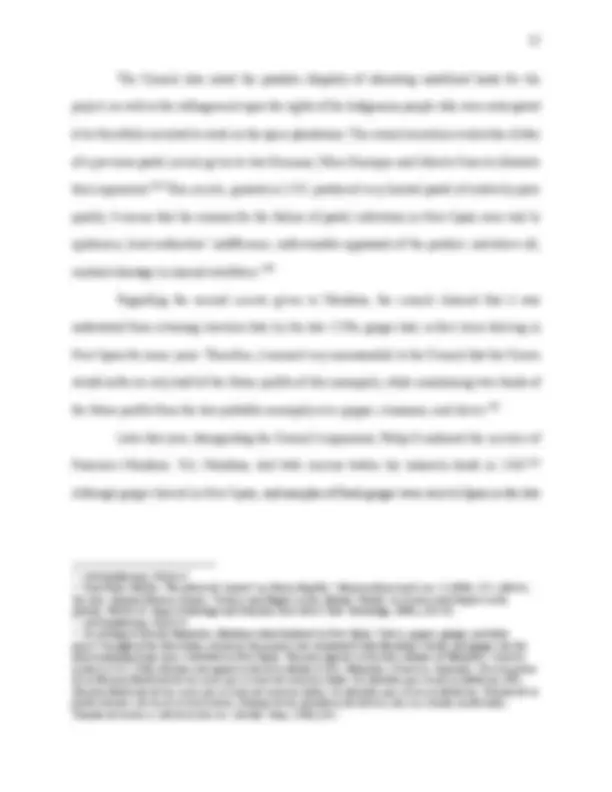
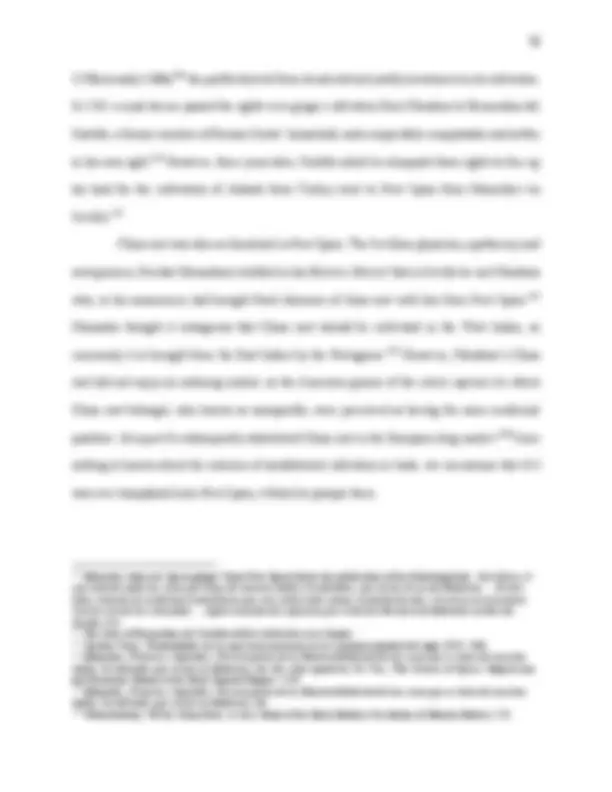
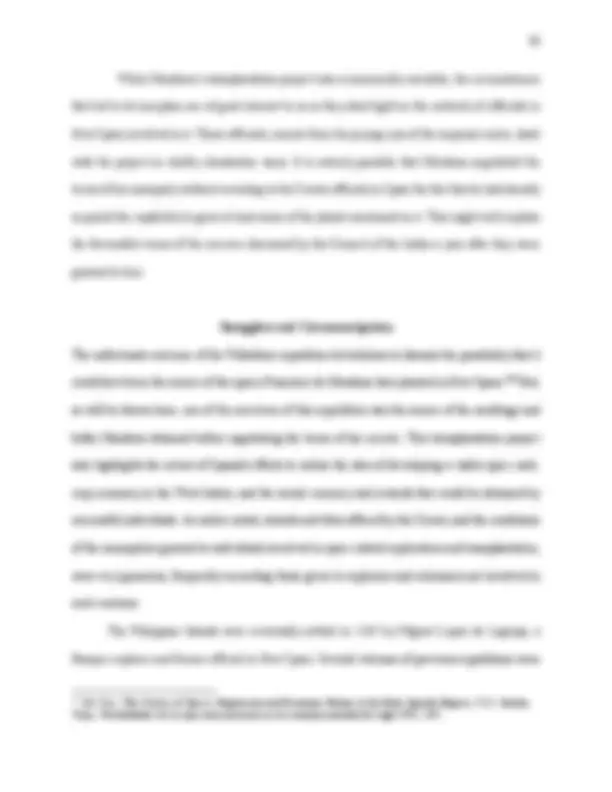
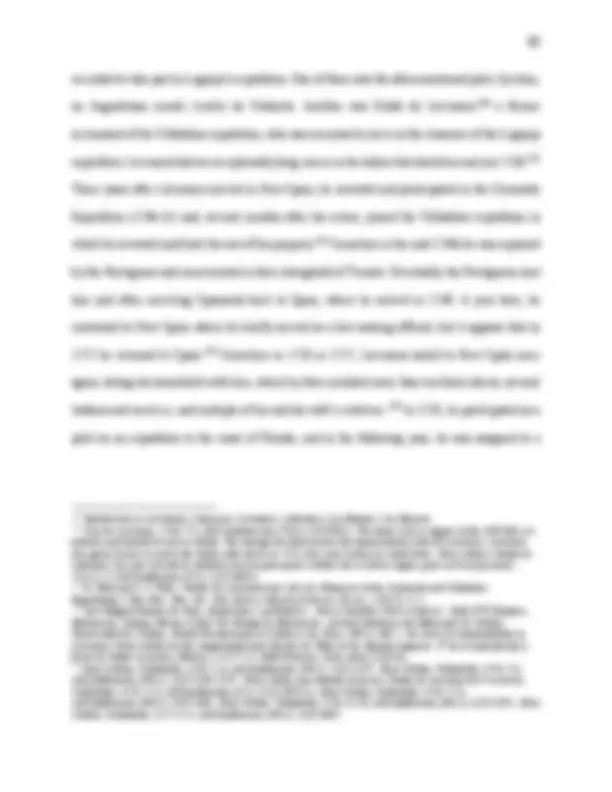
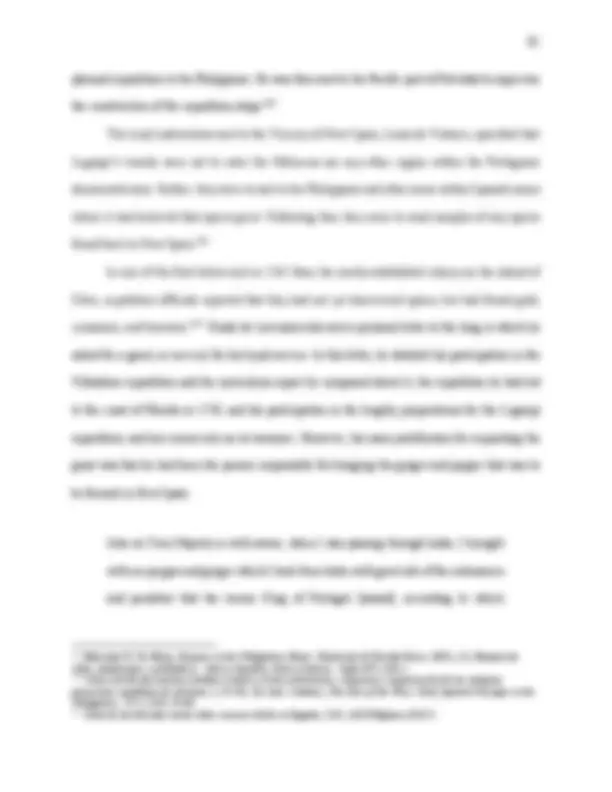
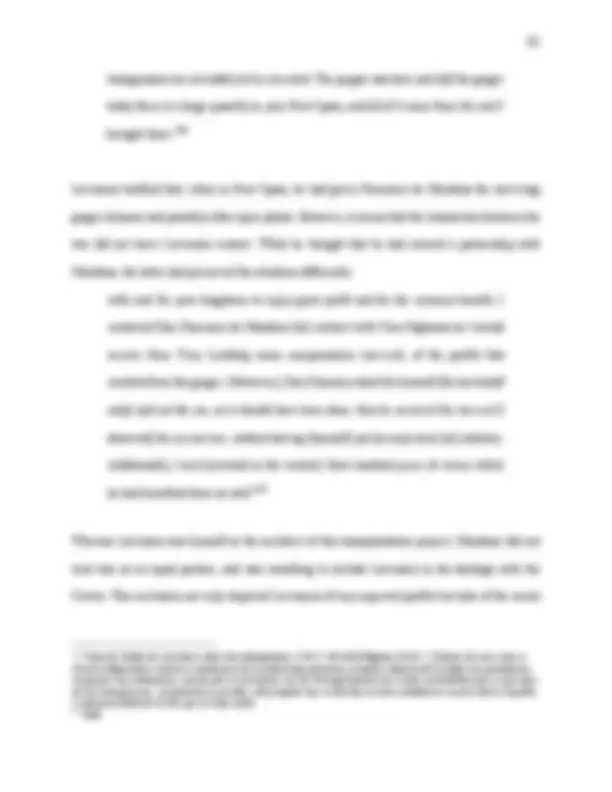
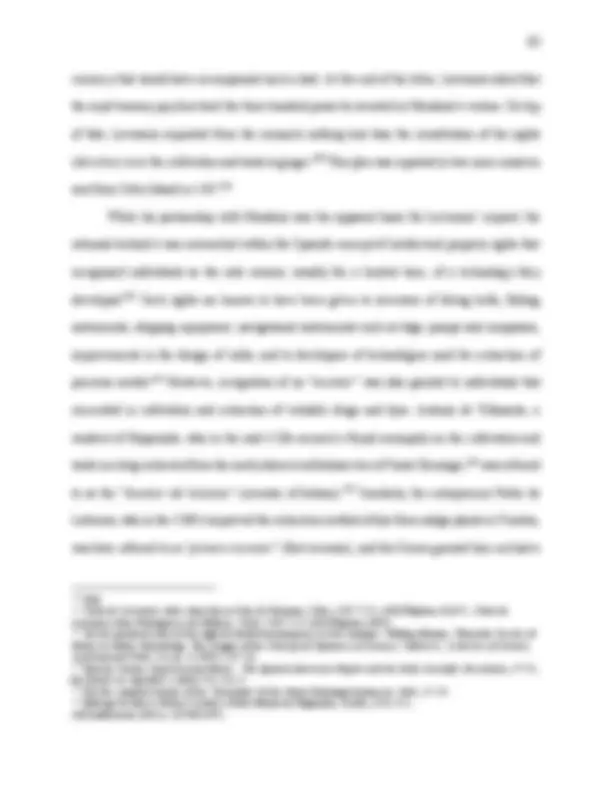
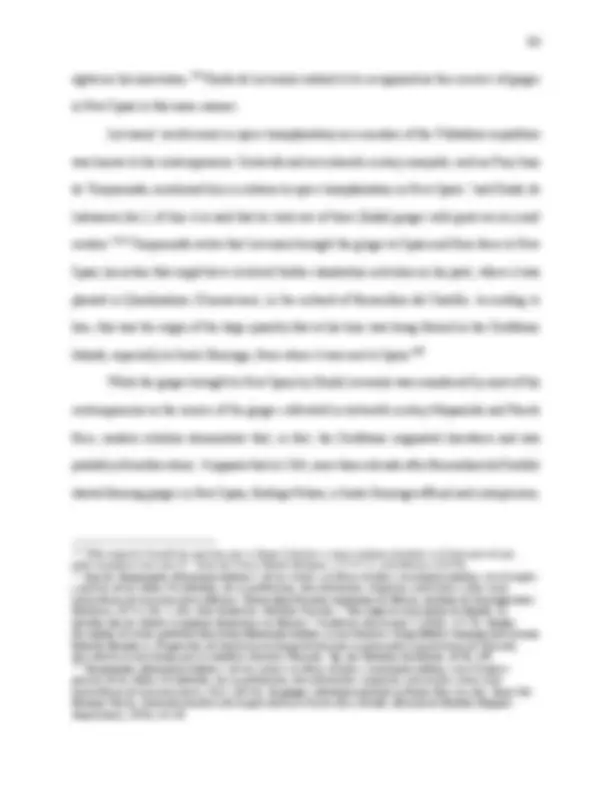
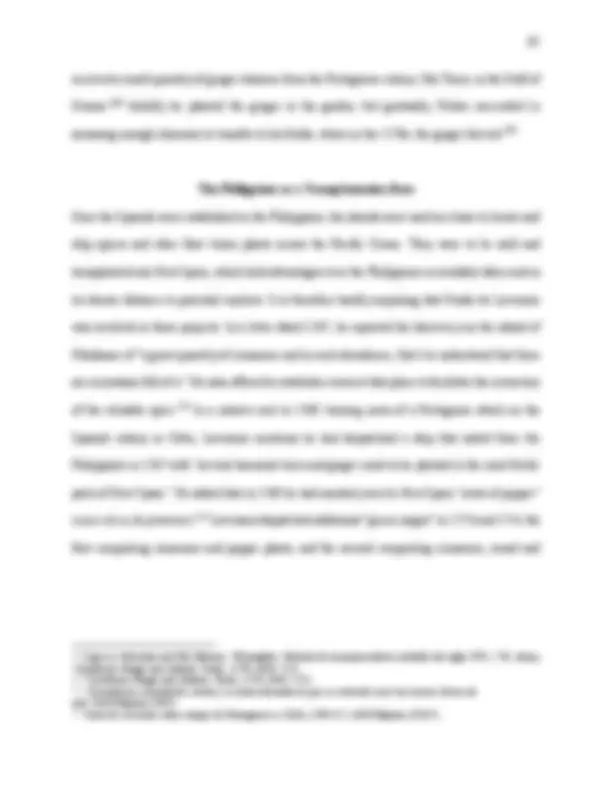
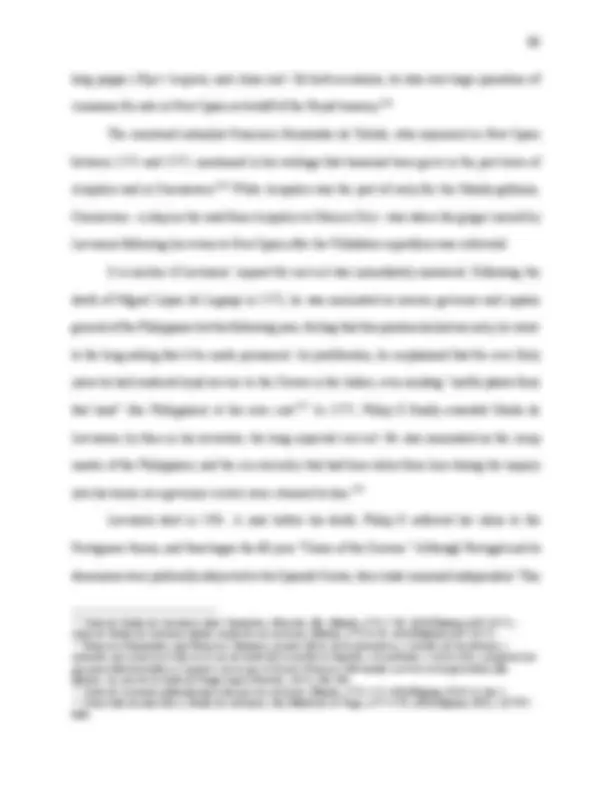
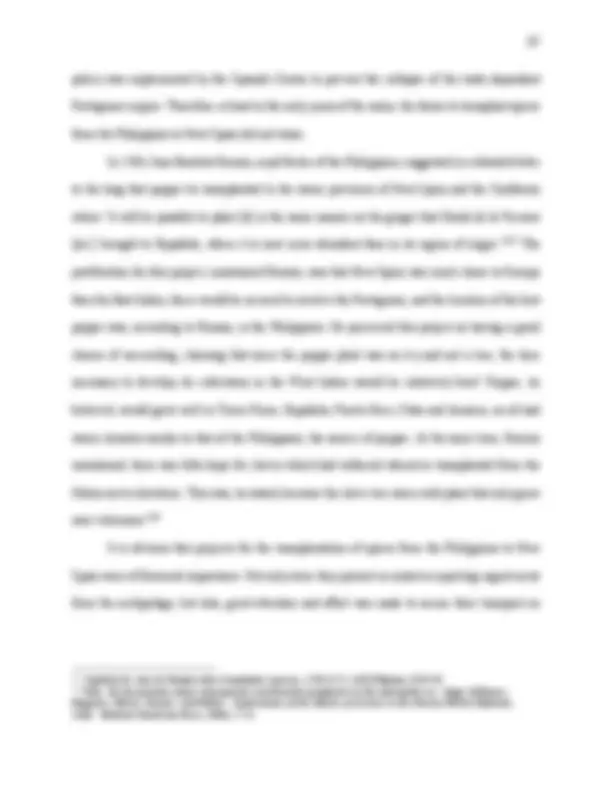
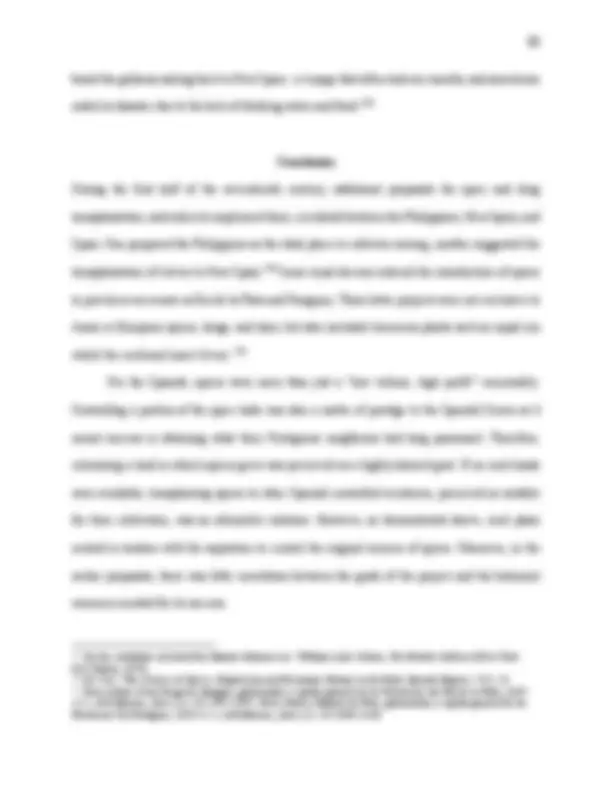
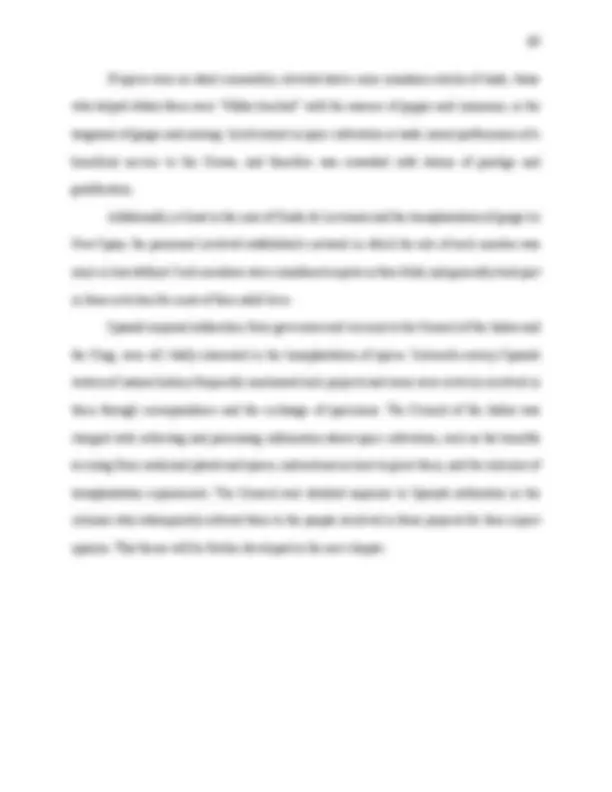
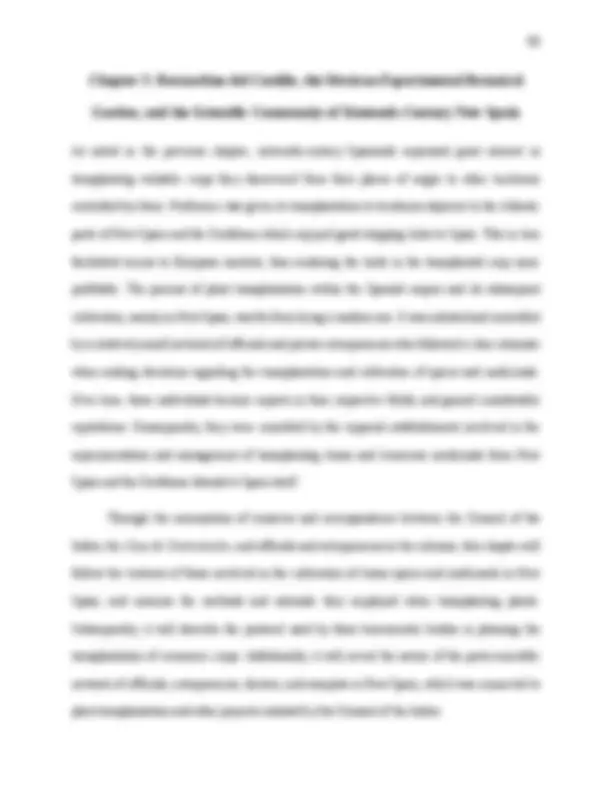


Estude fácil! Tem muito documento disponível na Docsity

Ganhe pontos ajudando outros esrudantes ou compre um plano Premium


Prepare-se para as provas
Estude fácil! Tem muito documento disponível na Docsity
Prepare-se para as provas com trabalhos de outros alunos como você, aqui na Docsity
Os melhores documentos à venda: Trabalhos de alunos formados
Prepare-se com as videoaulas e exercícios resolvidos criados a partir da grade da sua Universidade
Responda perguntas de provas passadas e avalie sua preparação.

Ganhe pontos para baixar
Ganhe pontos ajudando outros esrudantes ou compre um plano Premium
Comunidade
Peça ajuda à comunidade e tire suas dúvidas relacionadas ao estudo
Descubra as melhores universidades em seu país de acordo com os usuários da Docsity
Guias grátis
Baixe gratuitamente nossos guias de estudo, métodos para diminuir a ansiedade, dicas de TCC preparadas pelos professores da Docsity
Peteralistairfry@gmail.História Global das especiarias
Tipologia: Manuais, Projetos, Pesquisas
1 / 228

Esta página não é visível na pré-visualização
Não perca as partes importantes!





























































































Omri Bassewitch Frenkel Department of History and Classical Studies Faculty of Arts McGill University Montreal January 2017 A thesis submitted to McGill University in partial fulfillment of the requirements of the degree of Doctor of Philosophy © Omri Bassewitch Frenkel 2017
ii
This dissertation focuses on the way in which Crown-sponsored attempts to transplant or domesticate commercially valuable Asian spices throughout the Spanish empire generated production, circulation and institutionalization of empirical knowledge throughout Spain’s imperial domains. Although largely unsuccessful, Spaniards perceived spice transplantations as an important component of Spain’s imperial expansion during the sixteenth and seventeenth centuries. Ventures for the introduction or domestication of spices were often initiated and run by networks of settlers, entrepreneurs, officials, friars, and natural historians, who, through empirical observation and experimentation, acquired specific expertise in that field. Successful spice transplantations attracted the attention of Spain’s imperial establishments, namely the Council of the Indies and the Casa de Contratación [known also as the “House of Trade”], which, in turn, engaged colonial administrators in Spanish America and the Philippines to call upon relevant experts for information regarding spice cultivation and processing. Consequently, experiments in the introduction and cultivation of spices were conducted in private and Crown estates in Spanish America, the Philippines and Spain, and the results thereof helped formulate Crown policies regulating spice cultivation and trade. It is maintained here that spice transplantation projects reflect an organizational culture in which policies were formed and decisions were made based on expert opinions obtained through empirical observations and experiments. Essentially, the Crown has adopted a scientific approach to direct its policies. Therefore, this study argues that as early as the 1570s, Crown establishments assessed and analyzed complex empirical evidence in variable economic, political, and diplomatic contexts, to form decisions which were perceived to bear critical consequences to Spain’s economy and its imperial expansion.
iv les décisions aux conséquences perçues critiques pour l'économie de l'Espagne et pour son expansion impériale.
v
I would like to express my deep gratitude to Prof. Gwyn Campbell. Thank you for taking me under your supervision, for encouraging and guiding me through this journey, especially during the difficult moments when I was straying in the dark. I appreciate your efforts and the long hours you spent striving to improve my dissertation. Many thanks to Prof. Nicolas Dew, for whom I repeatedly had the pleasure to work as a teaching assistant. Thank you for taking part in my advisory committee, and for providing kind advice throughout my doctoral research. Thanks as well to Prof. Brian Cowan for taking part in my advisory committee, and for keeping your office door open whenever I wanted to brainstorm or needed to complain. Additionally, special thanks to Prof. Paula De Vos from San Diego State University, whose scholarship inspired my dissertation and who agreed to be on my advisory committee. Thank you for your encouragement and for your valuable comments on my chapters. I would like to express my gratefulness to Prof. Gershon Hundert, who as a graduate advisor went out of his way to personally let me know that I was accepted into the program, and who continued to care for me ever since. This long and logistically complicated project would not have been possible without the financial assistance from McGill’s Department of History, The Peter Cundill Fellowship in History, Abner Kingman Fellowship in Arts, and the Wolfe Fellowship in Scientific and Technological Literacy. Special thanks to Professors Jason Opal, Brian Lewis. Griet Vankeerberghen, and Lorenz Lüthi, and again Nicolas Dew for helping me secure additional financial awards. I would like to thank Mitali Das, the Department’s Graduate and Postdoctoral Coordinator, that helped me navigate the University’s bureaucratic maze.
vii
Abstract ................................................................................................................................ ii Résumé ................................................................................................................................ iii Acknowledgments ............................................................................................................... v Table of Content .................................................................................................................. vii Table of Figures .................................................................................................................. ix Source Abbreviations - Archives and Sections ................................................................... x Introduction ......................................................................................................................... 1 Relevant Literature Review .................................................................................... 8 Chapter by Chapter ................................................................................................. 15 Note on Sources ...................................................................................................... 17 Chapter 1: On Empire and Spices ....................................................................................... 21 The Iberian Age of Exploration and the Search for Spices .................................... 21 Running an Empire ................................................................................................. 27 The Casa de Contratación de Indias .................................................................. 27 The Casa de la Especiería ................................................................................ 31 The Formation of the Council of the Indies ....................................................... 32 Juan de Ovando and his Inquiry into the Council of the Indies ......................... 34 Spices in Early Modern Europe ............................................................................... 38 Chapter 2: Ginger, Pepper and Prestige: Plant Transplantation and the Philippine Project 59 Tradition Meets Need – Spanish Crop Transplantation ........................................... 59 Old World Spices, New World Soil ......................................................................... 62 Spice Monopolies and Exploration ......................................................................... 68 Smugglers and Circumnavigation ............................................................................ 79 The Philippines as a Transplantation Base ............................................................. 85 Conclusion ............................................................................................................... 88
The Spanish Philippine Economy: Natural Resources, Agriculture, and the China
x
Archives in Spain AGI - Archivo General de Indias. Contaduria – Contaduría Contratacion – Casa de la Contratación Gobierno Buenos_Aires – Audiencia de Buenos Aires Filipinas – Audiencia de Filipinas Mexico – Audiencia de México Santa_Fe – Audiencia de Santa Fe Santo_Domingo – Audiencia de Santo-Domingo Indiferente – Indiferente General Patronato - Patronato Real AHN – Archivo Historico Nacional Codices – Consejo de Indias Diversos-Colecciones - Colección Documentos de Indias AGS – Archivo General de Simancas CCA - Cámara de Castilla Archives in Mexico AGN – Archivo General de la Nación General de Parte – Institutos Coloniales/Gobierno Virreinal/General de Parte (GD51) Mercedes - Institutos Coloniales/Real Audiencia/Mercedes (GD72) Tierras - Institutos Coloniales/Real Audiencia/Tierras (GD110)
In late 1552, Francisco de Mendoza, son of the first viceroy of New Spain, Antonio de Mendoza, returned to Spain from the New World.^1 Mendoza, who had also commissioned an herbal of Aztec medicinals composed in Latin, known today as the codex de la Cruz - Badiano ,^2 had a strong interest in economic botany.^3 Sometime after his arrival, Mendoza met Nicolás Monardes, a renowned Sevillian physician, apothecary, and entrepreneur. Since the only mention of this meeting is Monardes’ account of it,^4 its purpose is not entirely clear. Given the reputation of the two men, we can assume that Mendoza either sought Monardes’ expert opinion, or had interest in doing business with him. At their meeting in sometime between 1552 and 1558, Mendoza handed Monardes fresh tubers of China root ( Smilax china ), a medicinal plant native to East Asia, which was considered effective in treating syphilis. Monardes was evidently surprised, as he had only previously seen the root in its dry form. Mendoza explained that these roots originated from New Spain, where they had recently been harvested. Monardes did not expect China root, usually imported into Europe from East Asia by the Portuguese, to be cultivated in New Spain. Mendoza also disclosed (^1) Francisco Javier Escudero Buendía, Francisco de Mendoza, el Indio, 1524-1563 : Protomonarca de México y Perú, comendador de Socuéllamos y capitán general de las Galeras de España (Guadalajara [Spain]: AACHE Ediciones, 2006), 144-5. (^2) Titled Libellus de Medicinalibus Indorum Herbis – this herbal was commissioned by Francisco de Mendoza, or perhaps even by his father, and composed in the Franciscan College in Tlaltelolco, a city in the Valley of Mexico. Mendoza the father held close ties with the indigenous doctor Martín de la Cruz, one of the Codex’s authors. See: Millie Gimmel, "Reading Medicine in the Codex De La Cruz Badiano," Journal of the History of Ideas 69, no. 2 (2008): 172, 75. (^3) Economic botany was defined by Paula De Vos as “the practice of studying the botanical properties of plants that may be of use to human society and cultivating them for profit.” Paula De Vos, "The Science of Spices: Empiricism and Economic Botany in the Early Spanish Empire," Journal of World History Volume 17, no. Number 4 (2006):
(^4) Nicolás Monardes, Dos libros, el uno trata de todas las cosas que traen de nuestras Indias Occidentales, que siruen al uso de Medicina, ... El otro libro, trata de los medicinas marauillosas que son contra todo veneno, la piedra bezaar, y la yerua escuerçonera. Con la cura de los venenados. ... Agora nueuamente copuestos por el doctor Niculoso de Monardes medico de Seuilla (Sevilla: Trugillo, Sebastian, 1565), 31r-31v.
initiated and funded by the Crown or by private entrepreneurs? How common was the phenomenon of Asian cash crop transplantation in the sixteenth and early seventeenth-century Spanish Empire? And where were these medicinals destined to? Spice introduction and cultivation projects were an inherent component of Spanish colonization and empire building. Crop introduction was not an exclusively Spanish project. Rather, it can be argued that this phenomenon goes hand in hand with the history of human migration. However, the Spanish transplantation of Asian spices is perhaps the first recorded instance in which a society endeavored to introduce plants from lands it (at least initially) did not control to newly conquered territories. Moreover, the agricultural products that resulted from such introduction projects were largely not meant to be consumed in Spain, but exported to other Europeans markets. As such, Asian spices, rather than sugarcane, which had been introduced and cultivated in the Iberian Peninsula since Muslim times, represent the true origin of cash-crops.^7 Besides the mere novelty, Asian spices’ foreign nature and their introduction to the Americas, provided the Spaniards with epistemological challenges, similarly to those they encountered when facing American flora. Therefore, the knowledge required for such introduction projects was necessarily obtained in an empirical manner. Attempts at spice transplantation highlight Spain’s utilitarian imperial culture, which encouraged Crown institutions to collect empirical knowledge regarding the empires’ natural resources, analyze it, and utilize it in decision making processes. Such knowledge was based on the observation and experimentation of individuals, such as officials, settlers, entrepreneurs, natural historians and friars in New Spain and the Philippines. Consequently, this work explores (^7) Cash crop is defined as “a crop that is grown mainly to be sold, rather than used by the people who grew it or those living in the area it is grown in.” Cambridge Dictionary. Online. “Cash Crop”. http://dictionary.cambridge.org/ Accessed on 31.3.2017.
the bureaucratic and social connections between these royal institutions and those involved in transplantation projects, as well as the mechanisms through which knowledge about Asian spices and methods for their transplantation and cultivation was disseminated throughout the empire. Spices and medicinals were a low-volume high-profit commodity much sought after by early modern Europeans. Specifically, spices of Asian origin, such as cloves, nutmeg, cinnamon, and ginger, featured as important components in early modern European cuisines and medicinal preparations. In the fifteenth century, Venice controlled the Mediterranean trade in such spices and was the main source of supply for markets in Europe. The desire to reach the origins of such spices and partake in the lucrative Asian-European spice trade triggered the fifteenth-century Iberian maritime voyages. The well-known outcome of these voyages was Columbus’ landing on the Caribbean islands, and Vasco da Gama reaching India where real Indians and true spices were found. During the first decades of the sixteenth century, the Portuguese extended their hold on the sources of spices, establishing fortified factories on the Spice Islands,^8 the only source of cloves and nutmeg at that time. Subsequently, the Spanish adopted four strategies of economic botany in endeavouring to develop trade in spices: they attempted to identify local species of known spices, searched for new local plants with medicinal properties (bioprospecting) about which they learned from indigenous peoples, aspired to colonize territories in East Asia where they anticipated finding spices, and endeavoured to transplant “spices of commerce”^9 from their lands of origin in East Asia to territories they controlled. While during the sixteenth and early seventeenth centuries, the Spanish (^8) The Spice Islands also known as the Moluccas or Maluku Islands, are a part of today’s province of Northern Maluku in Eastern Indonesia. (^9) Spices such as nutmeg and cinnamon have many varieties, however, their potency and quality vary greatly. Early modern Europeans distinguished spices of high commercial value as “true spices” or “spies of commerce”.
farm animals from China and Japan, which were not traditionally consumed by Spaniards, but which complemented their diet on the Philippines. While the Spaniards anticipated that due to the proximity of the Philippines to the Moluccas, valuable spices were likely be readily available there, largely, their hopes did not materialize. Consequently, Spaniards in the Philippines sent seedlings of spices and medicinal plants to be planted in suitable locations in New Spain, continued to look for commercial varieties of spices on the archipelago, and attempted or proposed the transplantation of cloves and nutmeg from the Spice Islands to the Philippines. Although no large-scale spice cultivation on the archipelago developed in the sixteenth or seventeenth century, tobacco, privately introduced into the Philippines shortly after colonization, thrived both locally and as an export commodity as early as the first half of the seventeenth century. No significant durable trade in spices was ever achieved in the Spanish empire. Nevertheless, spices remained a focus of interest for the Spanish Crown and its subjects throughout the early modern period. Sixteenth and seventeenth-century Spanish explorers, officials, settlers, and friars in the Philippines and the Moluccas strove to locate spices; study their properties and processing methods; identify their climatic, geographical and nutritional needs; determine the feasibility of their transplantation to other Spanish controlled territories, and define their commercial value and potential markets. In New Spain, Hispaniola, and the Philippines, settlers, friars, and entrepreneurs experimented with the cultivation of such spices, but also perfected processing methods to match shipping conditions and European demand. Experiments in spice cultivation were similarly conducted by officials of the Casa de Contratación in Seville,^10 and (^10) The Casa de Contratación de Indias is sometimes referred to in English scholarship as the “House of Trade”. I chose to keep its Spanish title, as this establishment did not function just as a clearing house for the Indies but embodied other functions.
probably in other locations in Spain. Those officials were likewise responsible for evaluating market receptiveness to a variety of spice products. Subsequently, natural historians^11 confirmed the verity of New Spain grown spices in their materiae medicae , published in multiple European countries, thus encouraging their sale.^12 Such processes of spice introduction and assimilation required those involved to acquire specific expertise through observation, experimentation, and collaboration with one another. Consequently, protocols were established for spice transplantation from their places of origin in Southeast Asia to the Philippines, New Spain, and Spain. From its inception in the early sixteenth century, spice transplantation and cultivation were backed by the Crown in the form of grants, stipends, monopolies, tax exemptions, and even titles, which were given to entrepreneurs and settlers who undertook such projects. However, individuals in the imperial periphery often initiated or proposed the introduction of spices. They consulted imperial establishments, such as the Council of the Indies or the Casa de Contratación , when funding was required, a monetary award expected, or to negotiate exclusive cultivation and trade rights. Once involved in transplantation projects, these peninsular establishments worked in concert with the colonial administrations in America and the Philippines, and called upon botanical experts for their opinion.^13 Experiments in transplantation were conducted in fields, plots, and gardens^14 in Spanish America, the Philippines and Spain, and their results were used in the (^11) “Natural history” was an account of nature based on information acquired by the investigation of natural things. Harold John Cook, Matters of Exchange : Commerce, Medicine, and Science in the Dutch Golden Age (New Haven, Conn.: Yale University Press, 2007), 21. (^12) This process was somewhat similar to the dissemination and assimilation of New World drugs in Europe as described in: T. Huguet-Termes, "New World Materia Medica in Spanish Renaissance Medicine: From Scholarly Reception to Practical Impact," Medical history 45, no. 3 (2001): 363-8. (^13) Here I refer to early modern experts as defined by Eric H. Ash, "Introduction: Expertise and the Early Modern State," in Expertise : Practical Knowledge and the Early Modern State , ed. Eric H. Ash (Chicago, Ill.: University of Chicago Press, 2010), 4-10. (^14) Londa Shciebinger stressed in Plants and Empire that early modern botanical gardens performed as “experimental stations for agriculture and way stations for plant acclimatization for domestic and global trade, rare medicaments, and cash crops.” Londa L. Schiebinger, Plants and Empire : Colonial Bioprospecting in the Atlantic World , (Cambridge, Mass.: Harvard University Press, 2004): 11.
in environmental history, I do provide new information on the routes and networks responsible for the transplantation of spices from Asia to New Spain and the Caribbean. I also explore the manner in which European and American cash crops were introduced into the Philippines, following the Spanish colonization of the archipelago. The development of early modern sciences, in general, and natural history, in particular, is closely linked to the European imperial encounter with the New World. The European encounter with the previously unrecorded continent, its waterways, landscapes, peoples, and flora and fauna, and their need to generate profit from such resources, provoked an epistemological shift in the way Europeans understood their new surroundings. If, until the end of the fifteenth century, Europeans relied on such corpuses of cosmography and natural history written by ancients as Ptolemy and Dioscorides, in the Americas, they were obliged to observe, describe, and report the new natural phenomena they encountered there.^17 In 2002, Pamela H. Smith and Paula Findlen summarized this change, asserting that “the desire for domination over nature and peoples and their exploitation for income is integral to the construction of a new mode of rationality.” This rationality, according to them, “stressed eye witnessing, close observation, group judgment and evaluation of information.”^18 This empirical culture of information gathering and production of knowledge, argued Jorge Cañizares-Esguerra and Antonio Barrera-Osorio, originated in the Spanish Atlantic and was institutionalized by the Spanish Crown, through imperial establishments and governing bodies in the viceroyalties. Therefore, they maintained, the Spanish imperial policy towards (^17) For more on this theme see: John Huxtable Elliott, The Old World and the New 1492- 1650 , The Wiles Lectures, (Cambridge Eng.: University Press, 1970); Anthony Pagden, The Fall of Natural Man : The American Indian and the Origins of Comparative Ethnology , Cambridge Iberian and Latin American Studies (Cambridge, Eng. ; New York: Cambridge University Press, 1982). (^18) Pamela H. Smith, Findlen, Paula, "Introduction: Commerce and the Representation of Nature," in Merchants & Marvels : Commerce, Science and Art in Early Modern Europe , ed. Pamela H. Smith, Findlen, Paula (New York, NY: Routledge, 2002), 7.
knowledge collection and experimentation outlined the methodology and epistemology employed later in Western science, and thus can be considered as a precursor of the Scientific Revolution.^19 Cañizares-Esguerra and Barrera-Osorio’s scholarship was part of a wider discussion on the contribution of Spain to the development of Western modern science. Spanish scholars were well aware of the contributions of early modern Spaniards to the fields of cosmography, navigation, mathematics, natural science, engineering, architecture, metallurgy, mining, military technology and medicine.^20 However, such achievements were hardly mentioned in English literature,^21 which, until recently, either ignored the Spanish Empire, or stuck to the centuries-old narrative of the Black Legend ( Leyenda Negra ), according to which Spanish expansion overseas was driven by xenophobic, backward, militaristic forces.^22 A possible reason for this tendency is that scientific (^19) Jorge Cañizares-Esguerra, How to Write the History of the New World : Histories, Epistemologies, and Identities in the Eighteenth-Century Atlantic World (Stanford, Calif.: Stanford University Press, 2001); "Iberian Science in the Renaissance: Ignored How Much Longer?," Perspectives on Science 12, no. 1 (2004): 86- 124 ; "Iberian Colonial Science," Isis 96, no. 1 (2005): 64- 70 ; Antonio Barrera-Osorio, Experiencing Nature : The Spanish American Empire and the Early Scientific Revolution , 1st ed. (Austin, TX: University of Texas Press, 2006); "Empiricism in the Spanish Atlantic World," in Science and Empire in the Atlantic World , ed. James Delbourgo and Nicholas Dew (New York: Routledge, 2008), 177 - 202. (^20) See for example: Francisco Guerra, Historia de la Materia Médica Hispanoamericana y Filipinas en la época colonial. Inventario crítico y bibliográfico de manuscritos (Madrid: Afrodisio Aguado, 1973); José María López Piñero, Ciencia y técnica en la sociedad española de los siglos XVI y XVII , 1. ed. (Barcelona: Labor Universitaria, 1979); Raquel Álvarez Peláez, La Conquista de la naturaleza americana (Madrid: Consejo superior de investigaciones científicas, 1993); José Luis Fresquet Febrer, La experiencia americana y la terapéutica en los “Secretos de Chirurgia” (1567) de Pedro Arias de Benavides , Cuadernos Valencianos De Historia De La Medicina Y De La Ciencia Serie a, Monografías (Valencia: Instituto de Estudios Documentales e Históricos sobre Ciencia, Universitat de València, 1993); José Pardo Tomás and María Luz López Terrada, Las primeras noticias sobre plantas americanas en las relaciones de viajes y crónicas de Indias, 1493- 1553 (Valencia: Instituto de Estudios Documentales e Históricos sobre la Ciencia, Universitat de València, C.S.I.C., 1993). However, these scholarships, as observed Cañizares-Esguerra and Paula De Vos, were oftentimes tinted in Spanish patriotism, or did not comprehend the full extent and significance of Spain’s imperial scientific endeavours. Cañizares-Esguerra, "Iberian Science in the Renaissance: Ignored How Much Longer?," 106-7; Paula De Vos, "Research, Development, and Empire: State Support of Science in the Later Spanish Empire," Colonial Latin American Review 15, no. 1 (2006): 59 - 60. (^21) Somehow I. Bernard Cohen’s observation from 1959, regarding the effect of New World data circulating in Europe, went unnoticed: “these data not only filled the gaps in the whole description of nature on this globe, but were the source, or perhaps the occasion, of challenging ideas that upset general preconceptions.” I. Bernard Cohen, "The New World as a Source of Science for Europe " in Actes du IXe Congrès international d'histoire des sciences, Barcelona-Madrid, 1-7 Septembre 1959 (Barcelona; Paris: Asociación para la Historia de la Ciencia Española, Universidad de Barcelona ; Hermann & Co., 1960), 98. (^22) David Goodman's observant and acurate scholarship on science in Early Modern Spain was an exeption. David C. Goodman, Power and Penury : Government, Technology, and Science in Philip II's Spain (Cambridge; New York: